2007 Fiat Trip Around The World
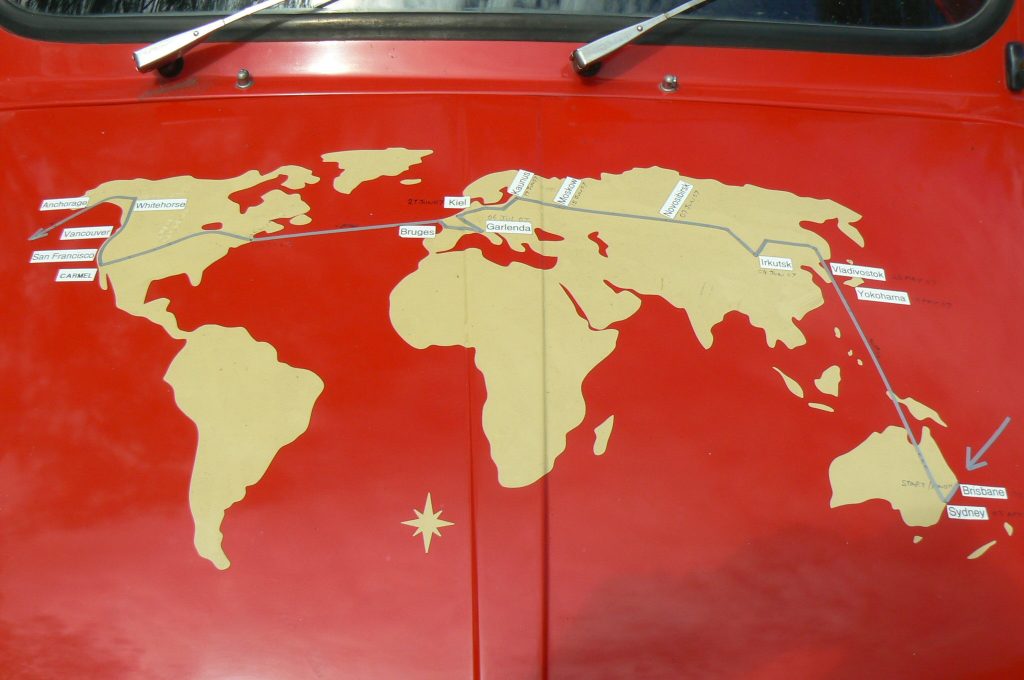
The Route 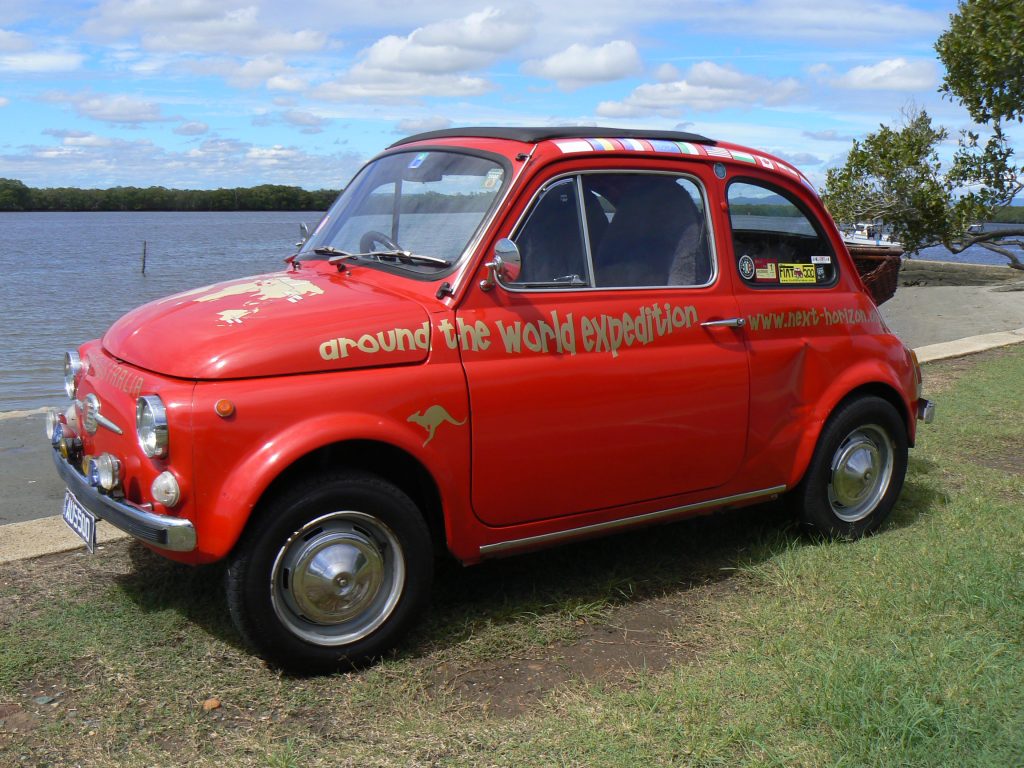
The Car 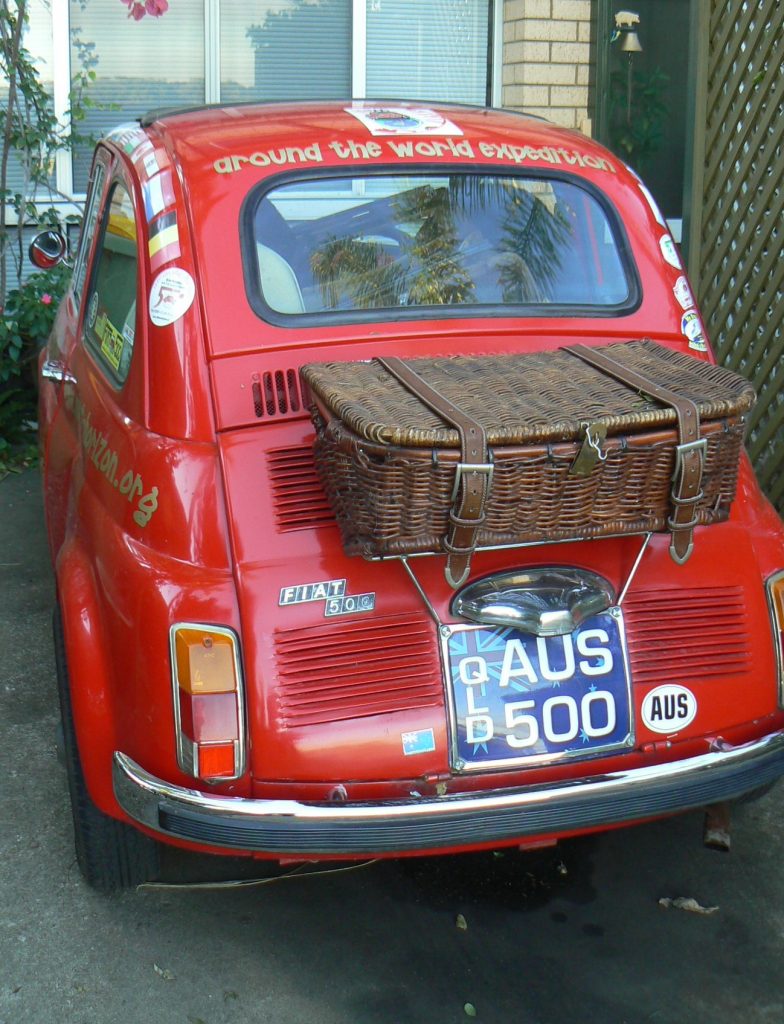
Back View 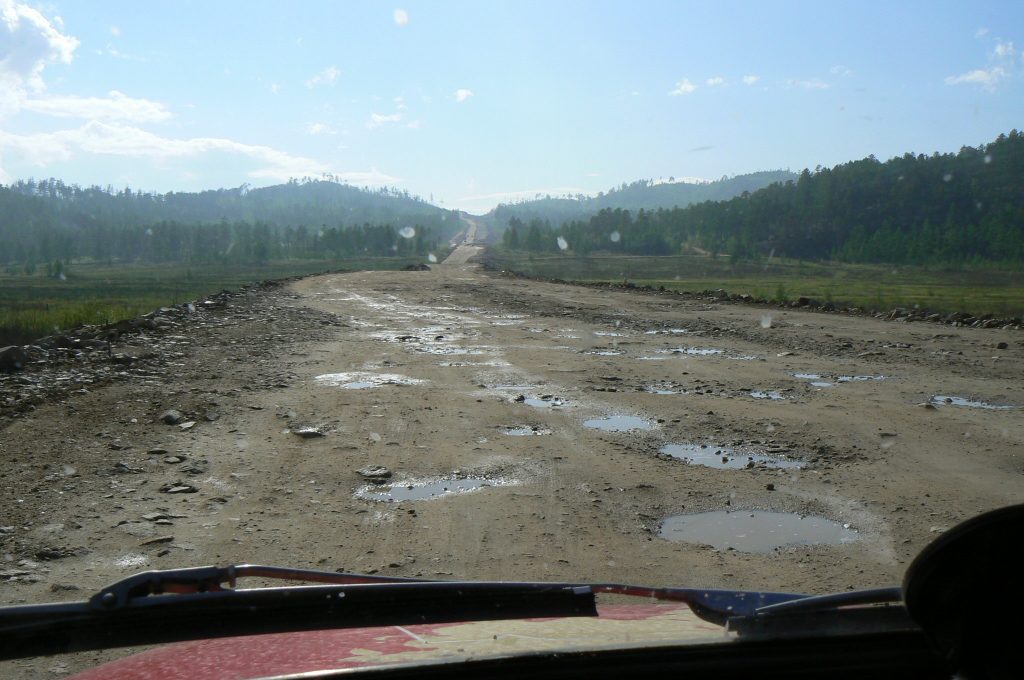
Russian roads 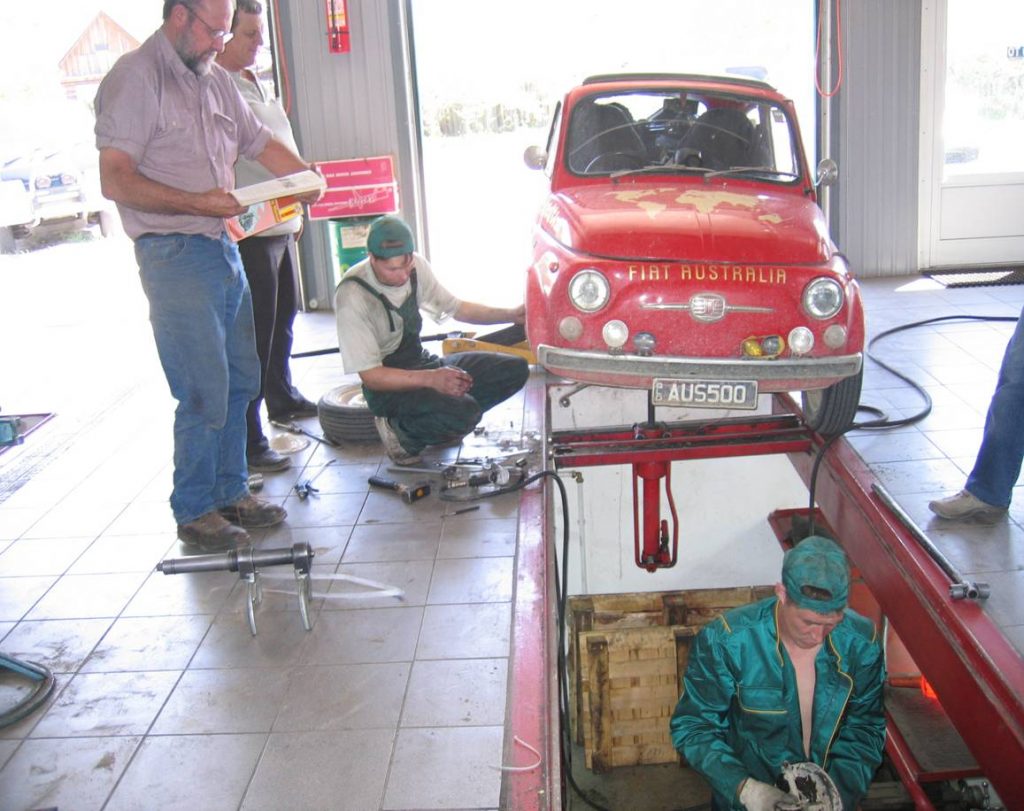
Repairs 
Repairs 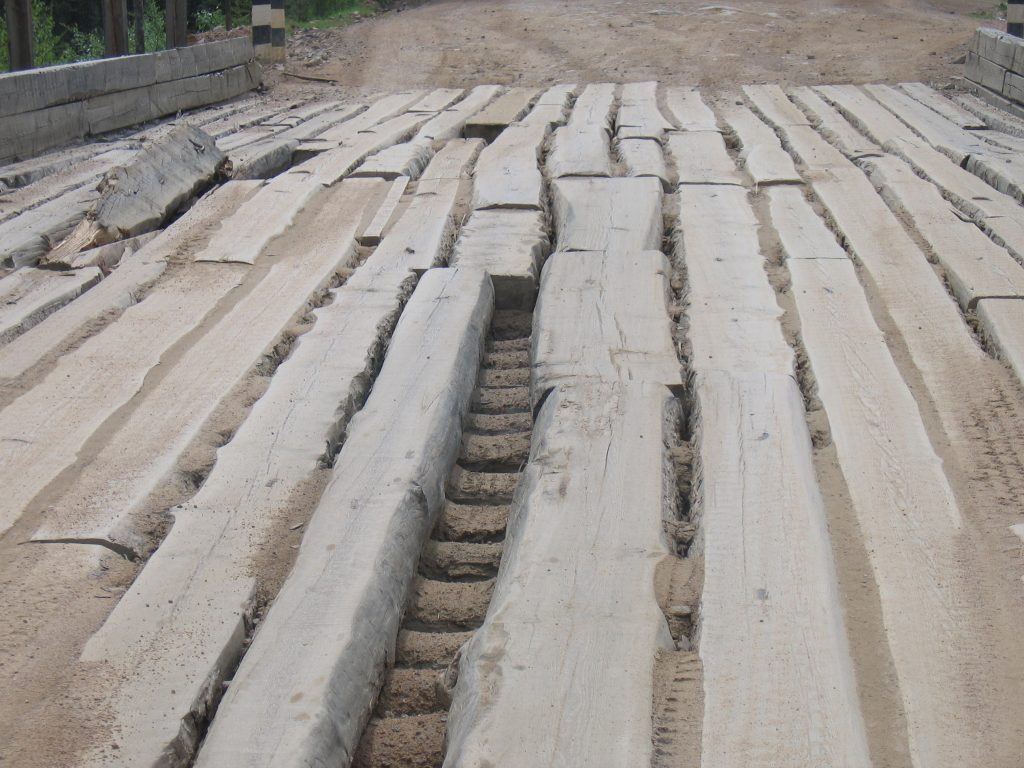
Russian roads 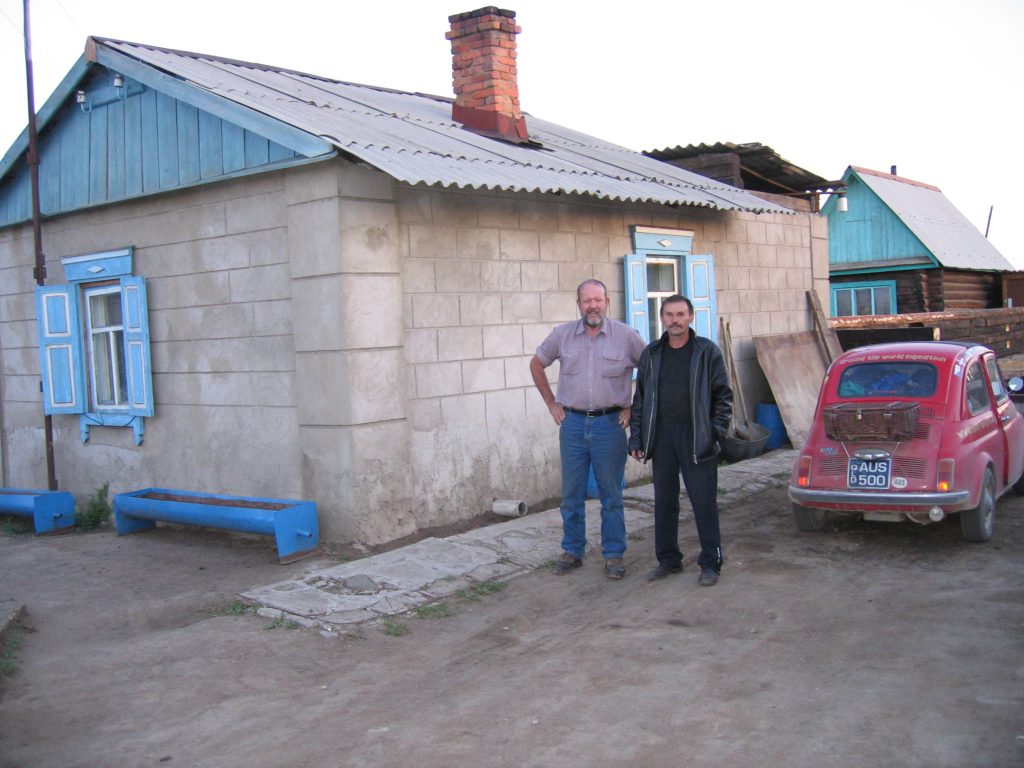
Impromptu B&B 
Repairs 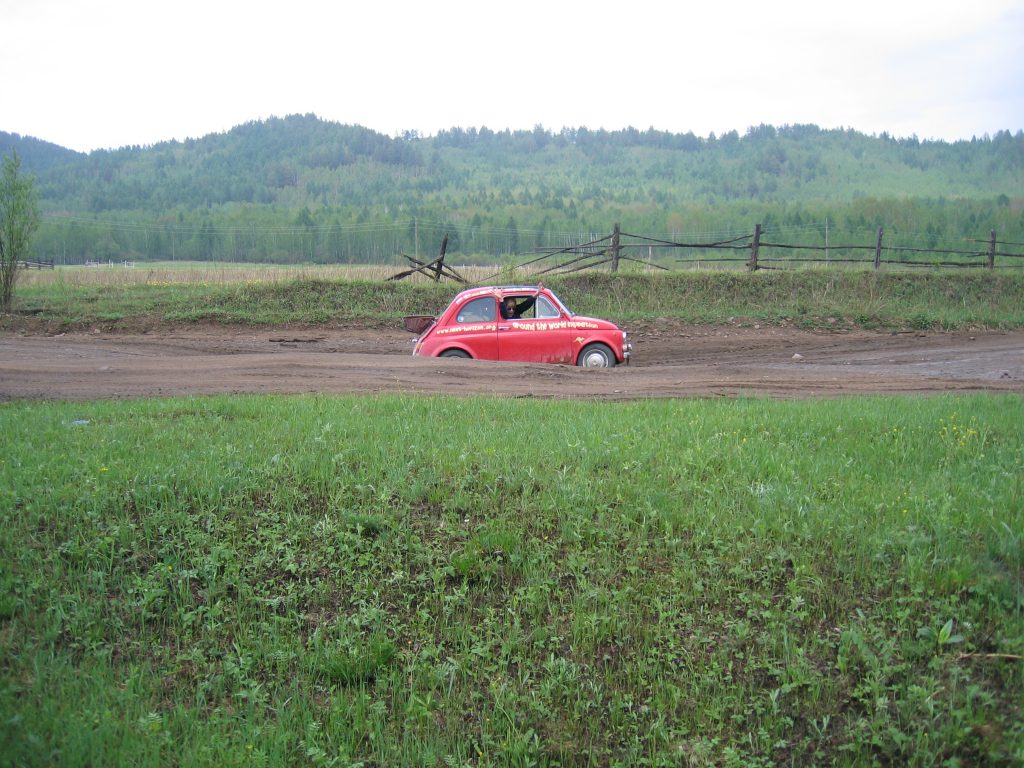
Disappearing down a pothole 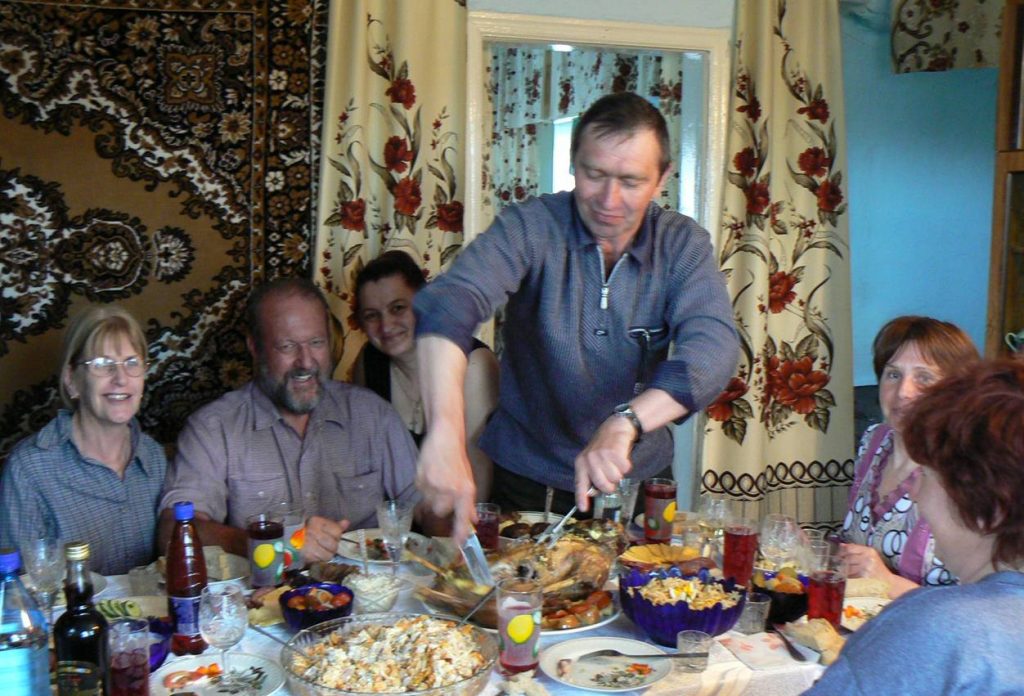
A feast with the Knvidzevich Family 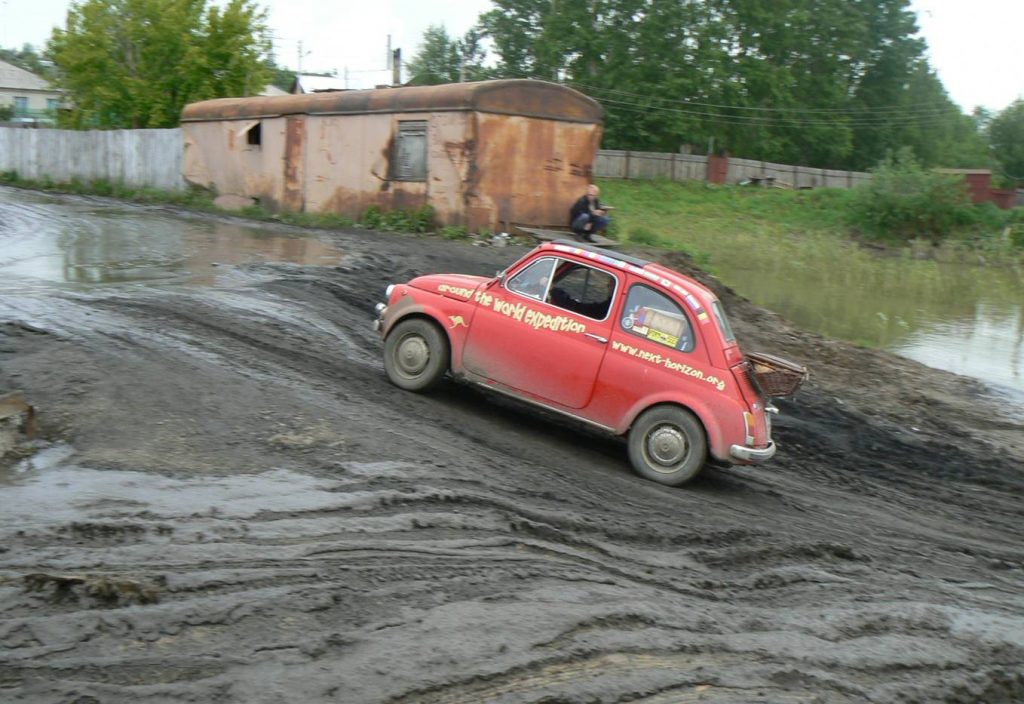
Russian roads 
“The Church of Blood” Yekaterinburg 
Smallest car in the carport 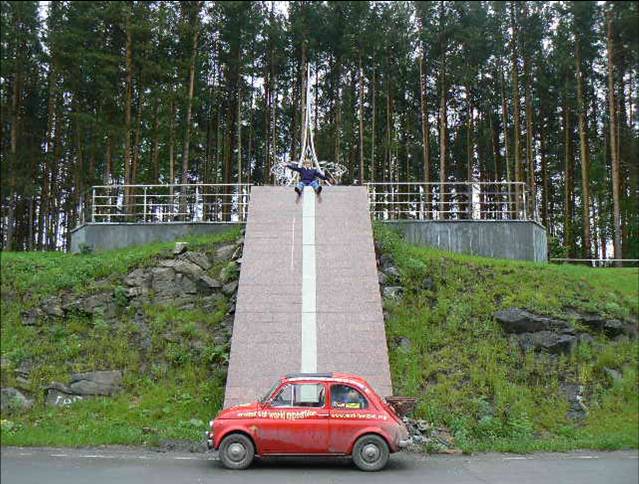
The Asian Euopean border 
Asian European border 
Russian roads 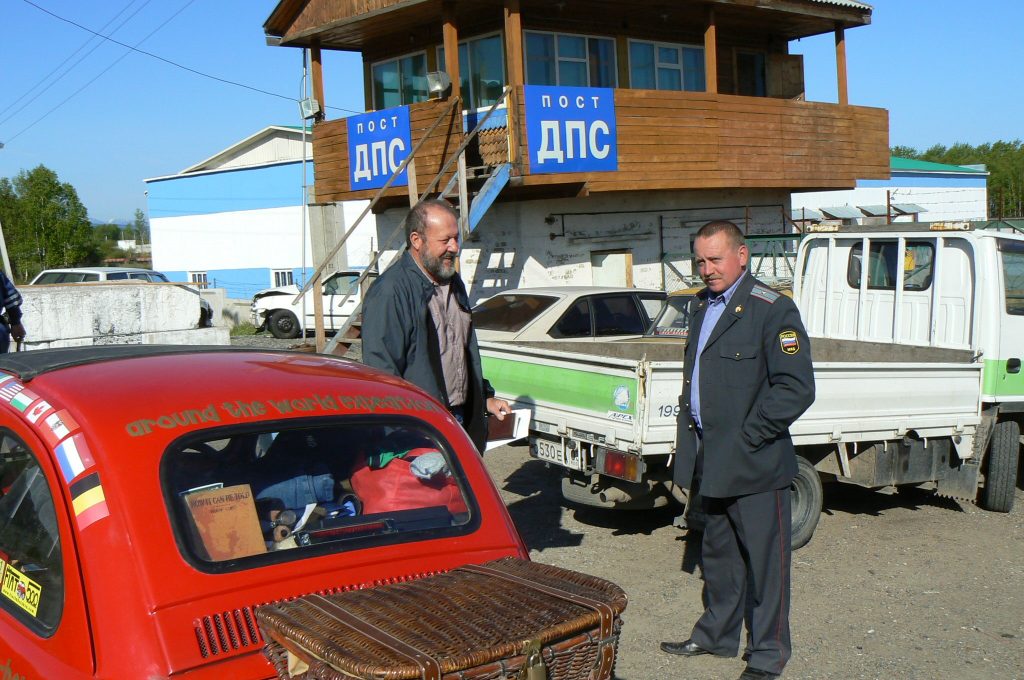
Police post 
Repairs 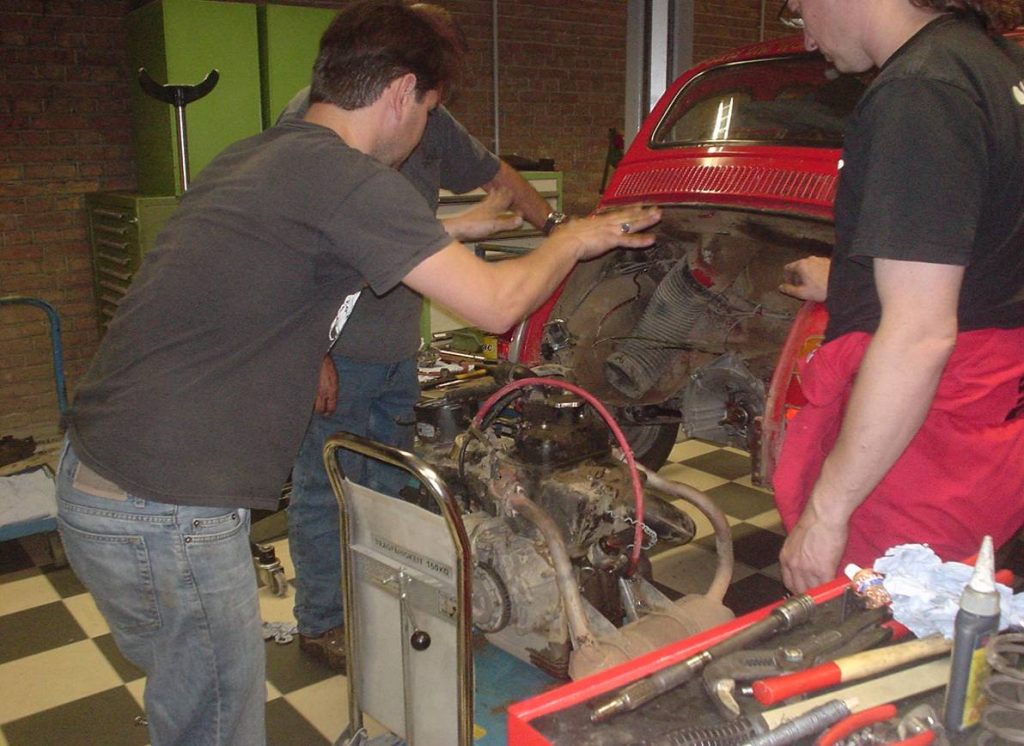
Repairs 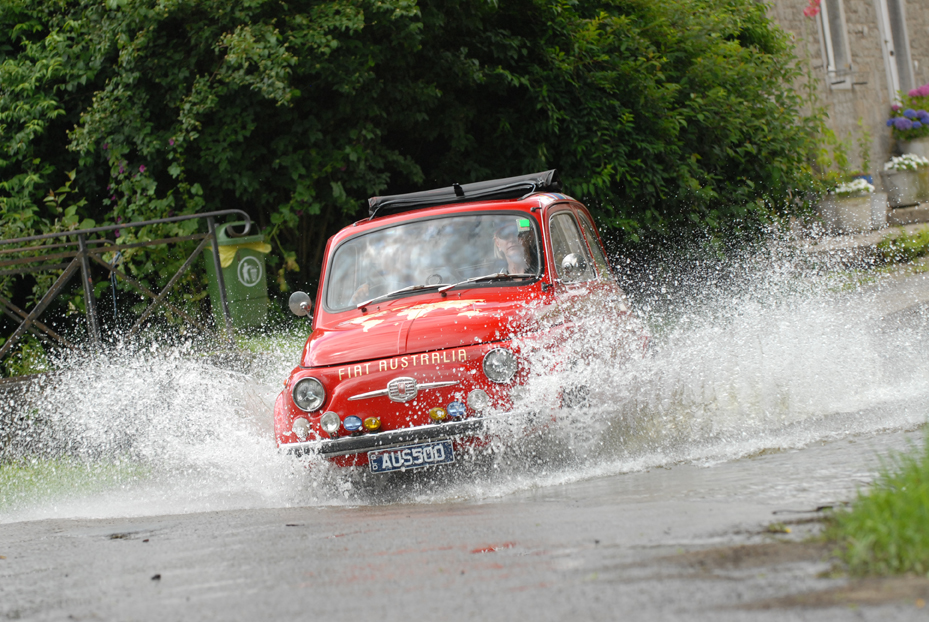
In Belguim 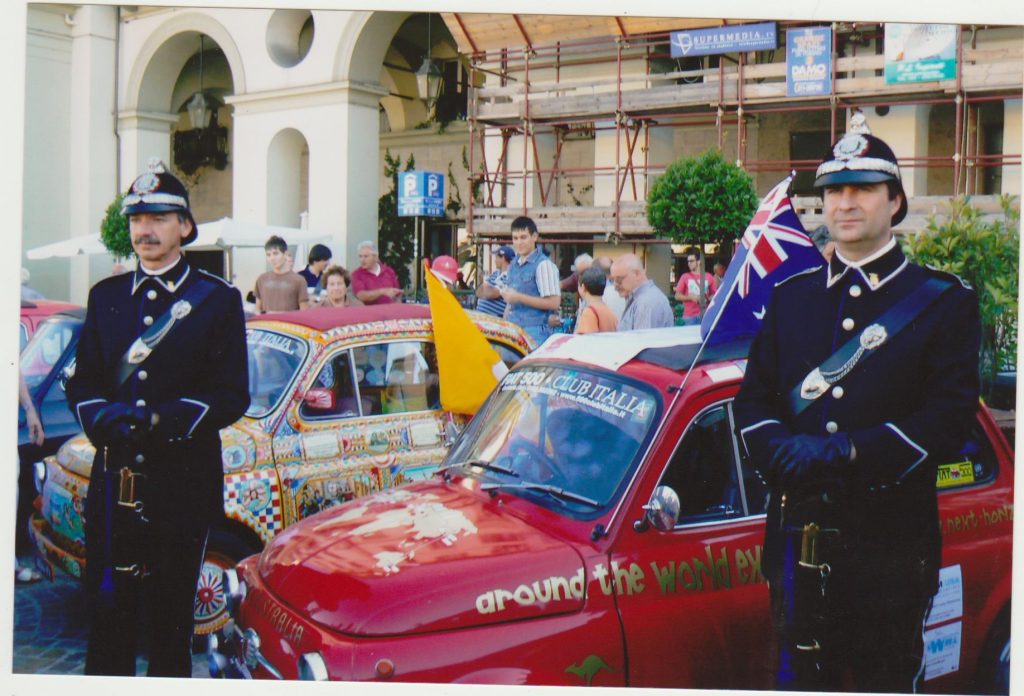
Display in Piazza Turin, Italy 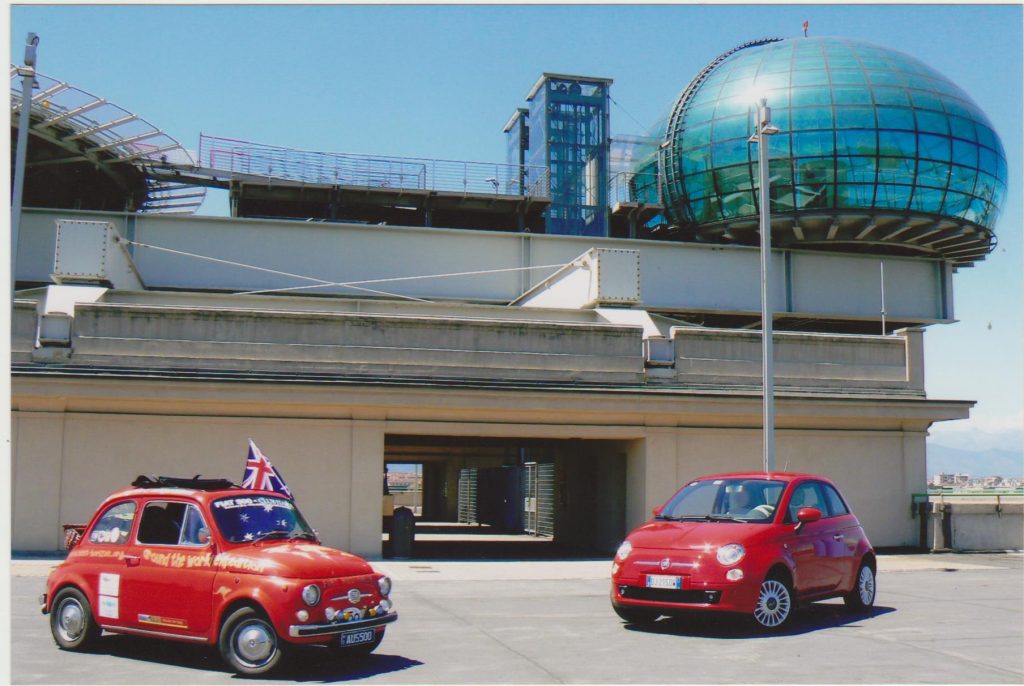
Lingotto, Turin 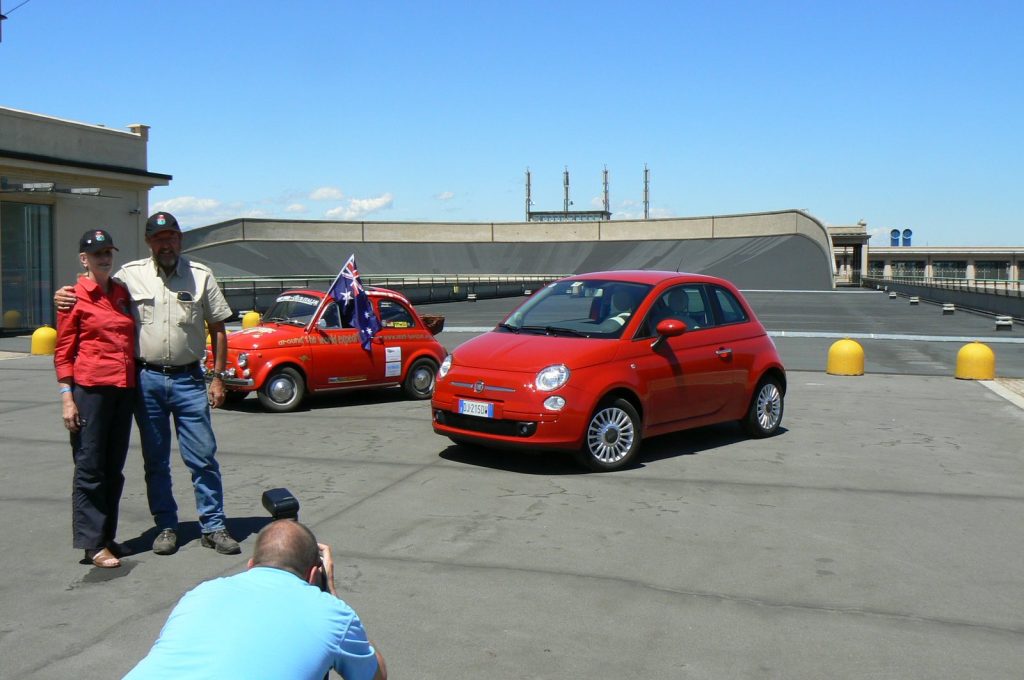
Lingotto, Turin 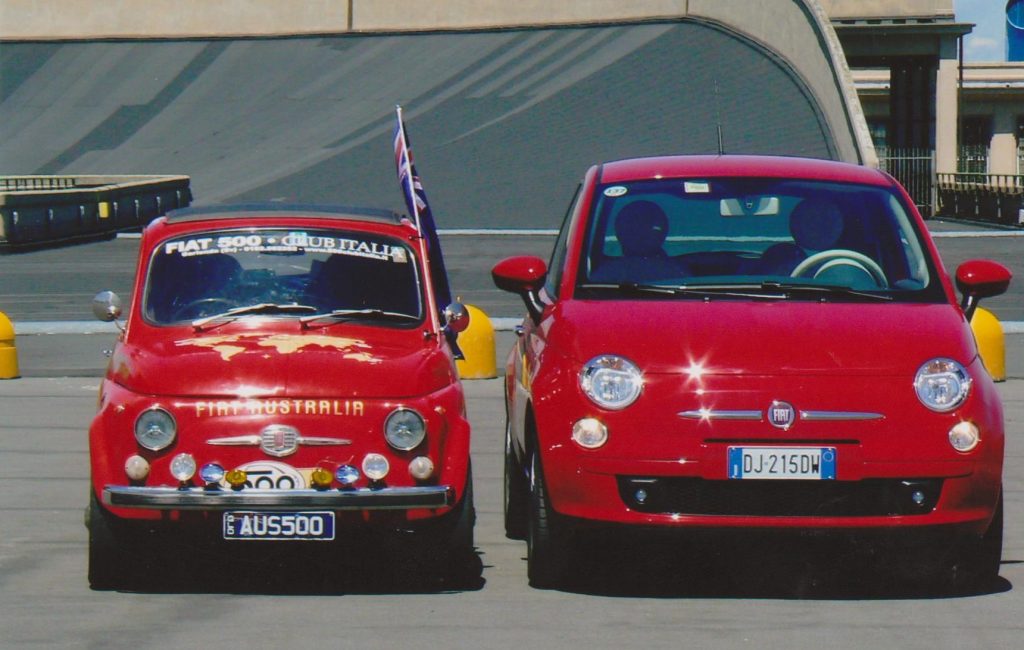
Old and New, Lingotto 
Galenda, Italy 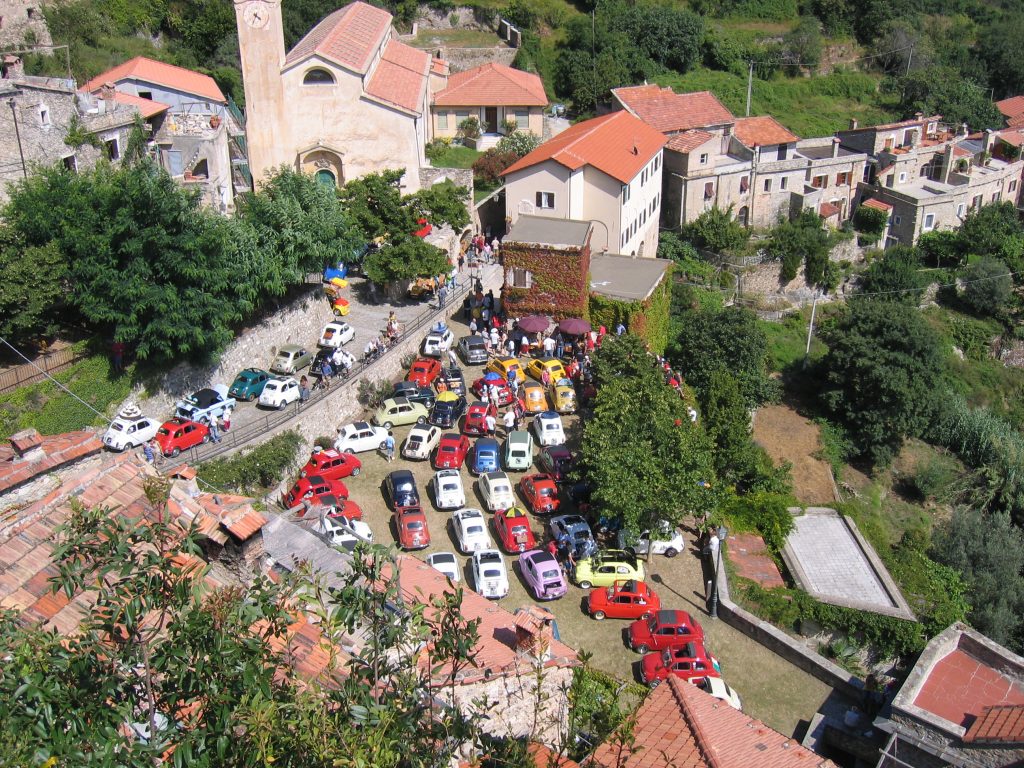
Day run, Italy 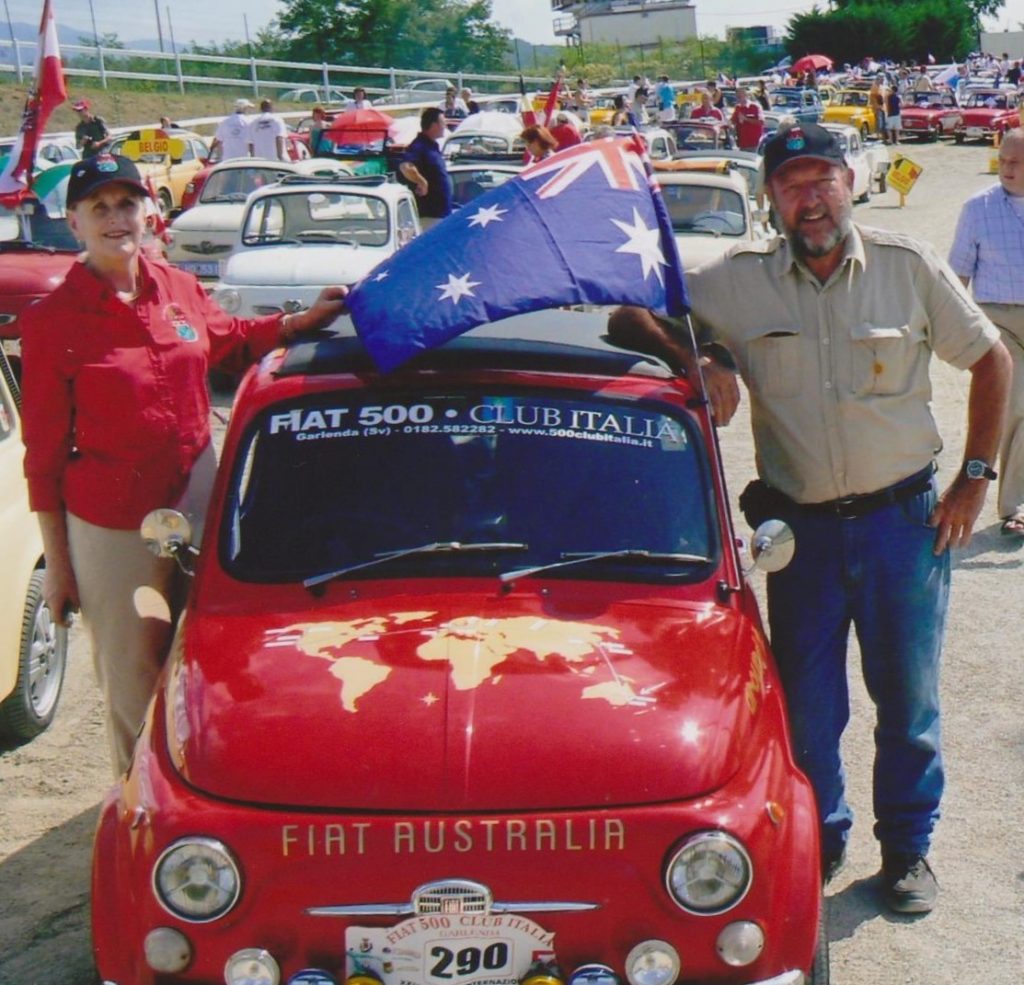
Garlenda Italy 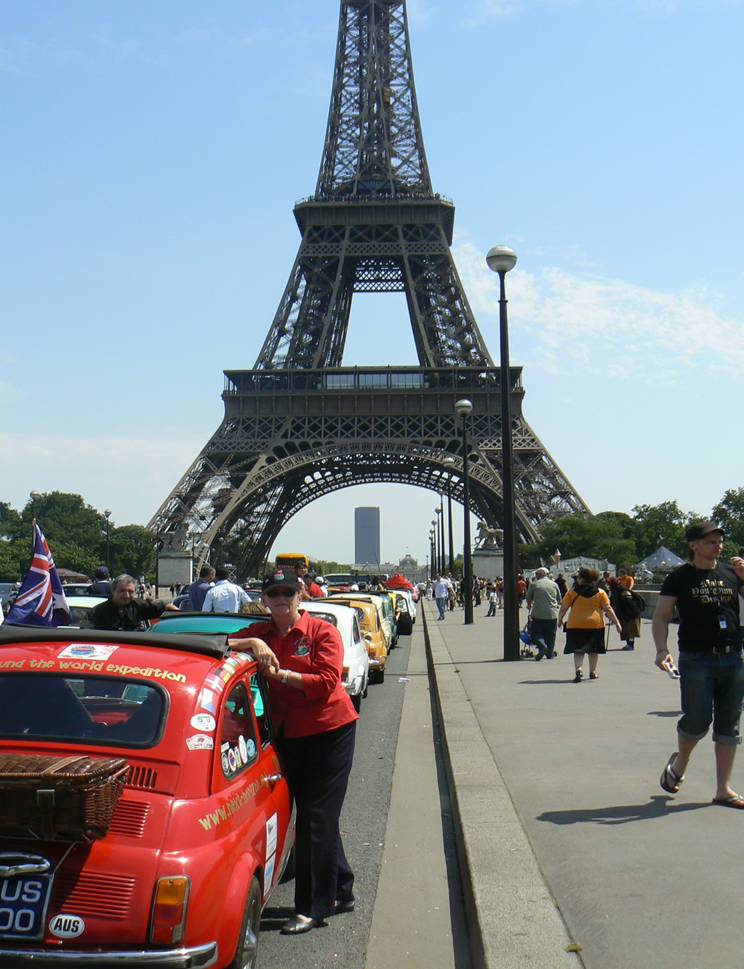
Paris, France 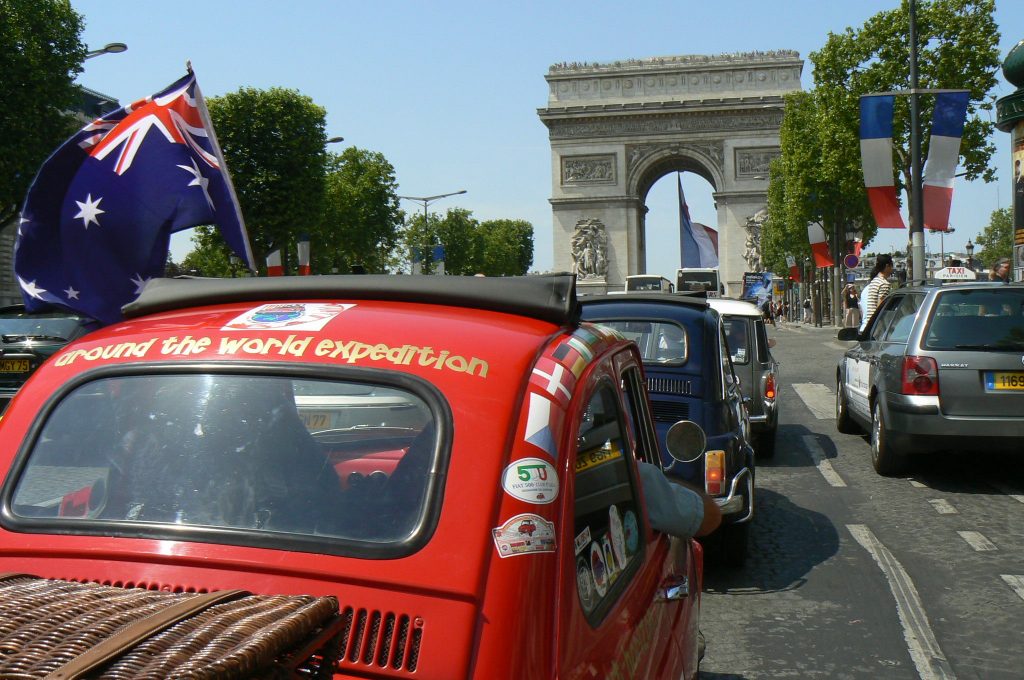
Paris, France 
France 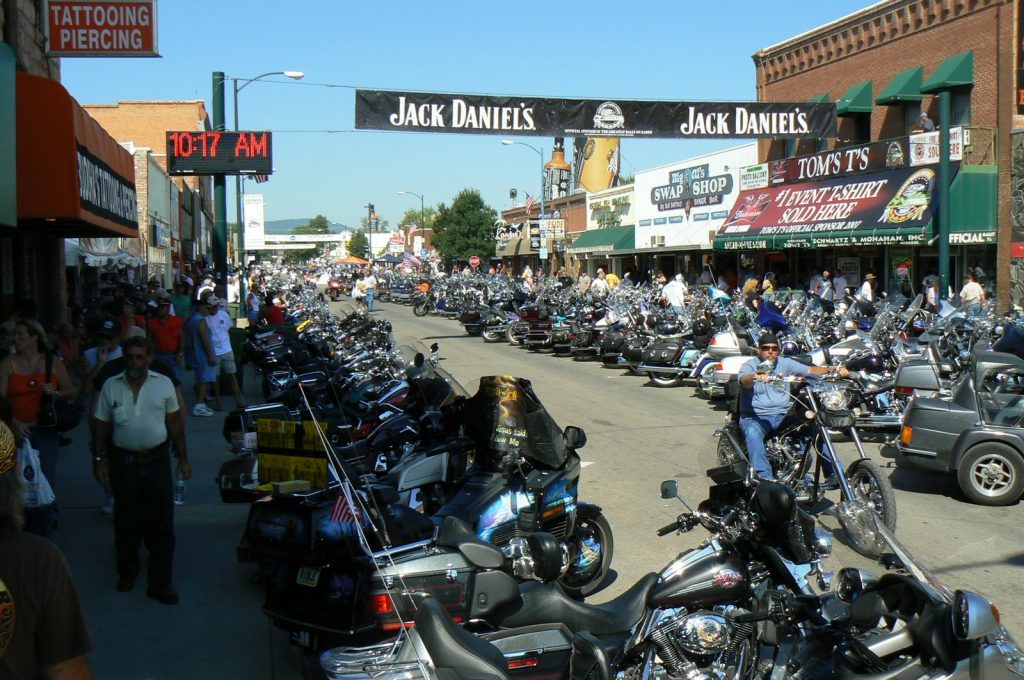
Sturgis, USA 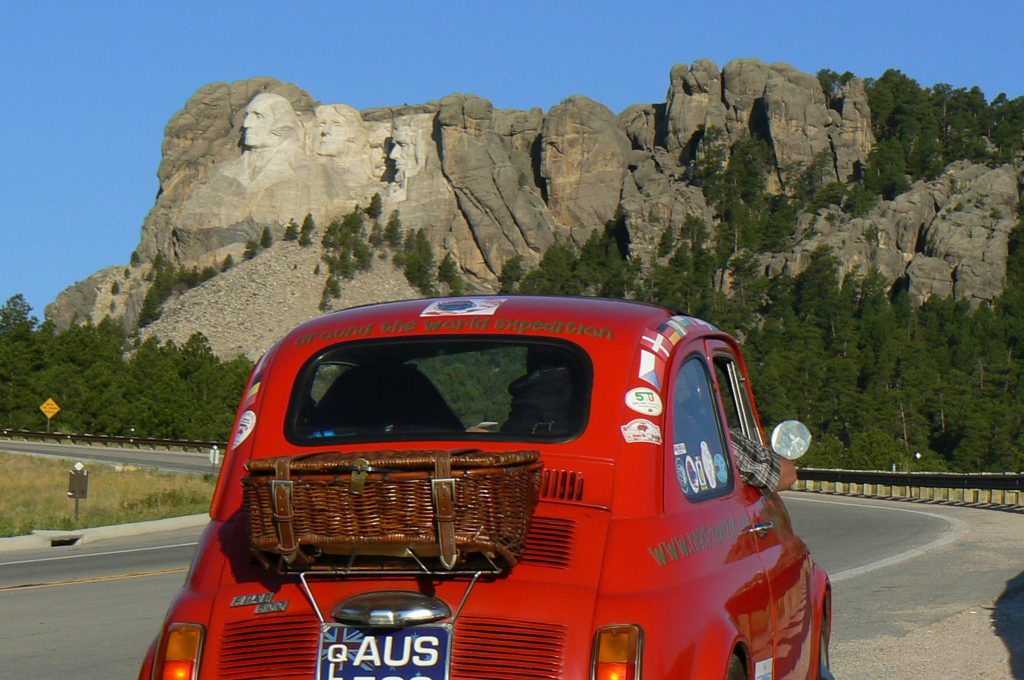
USA 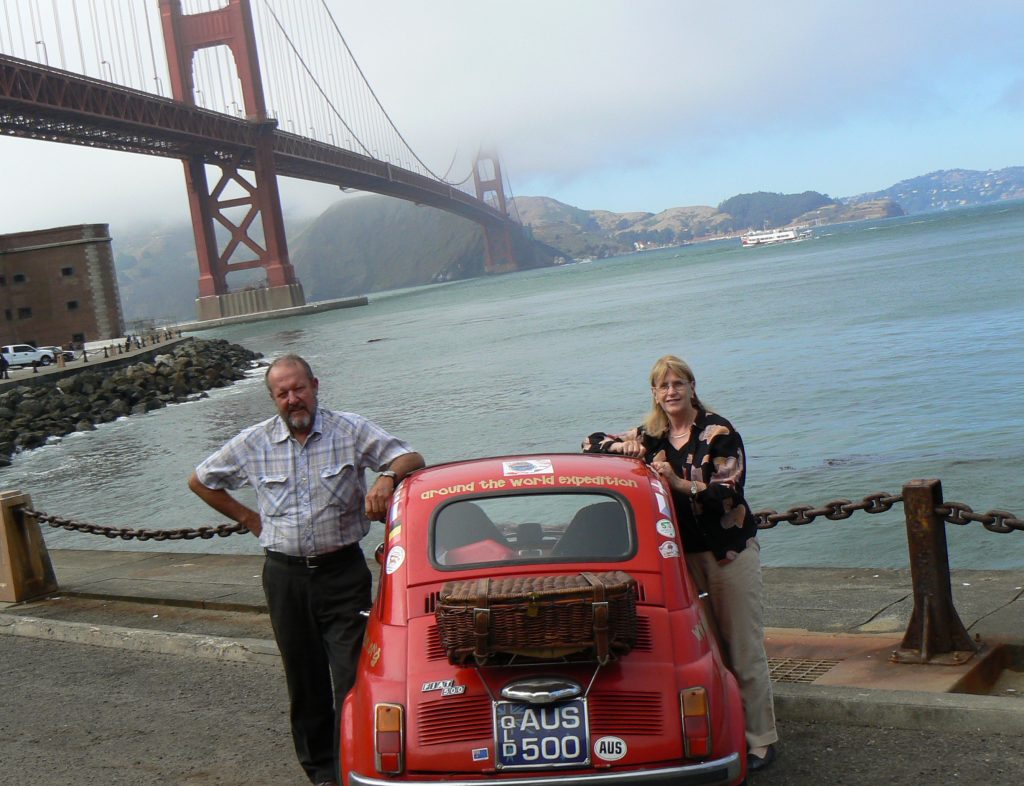
San Francisco, USA 
“The Quail” Car Show, Carmel Valley 
Alaskan Border 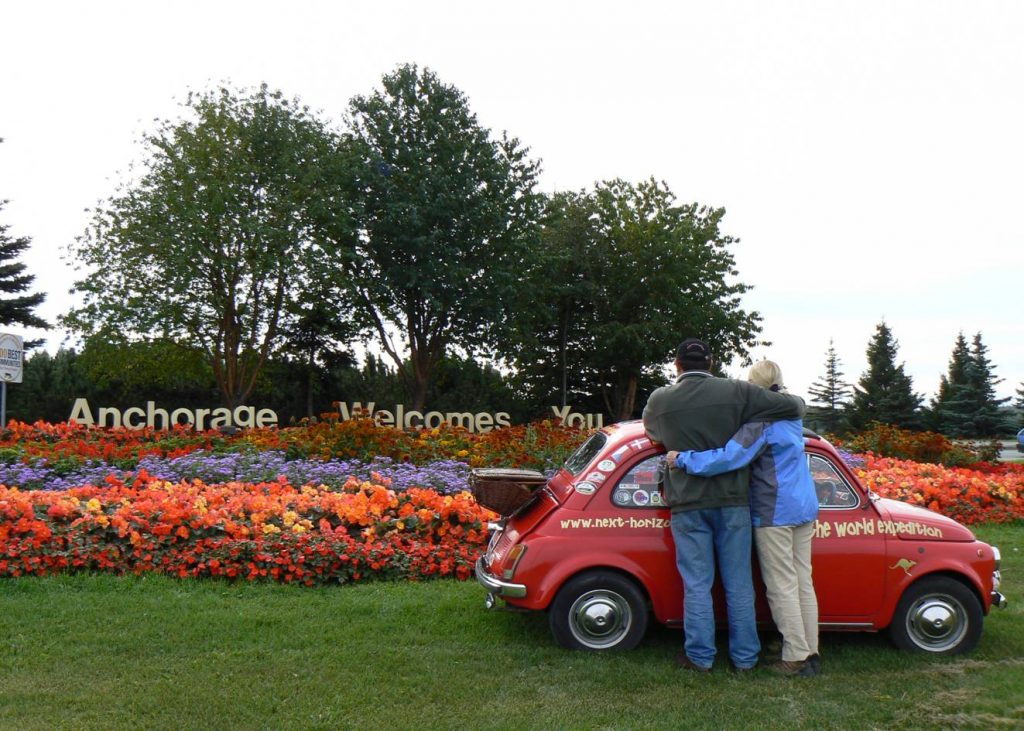
End of Trip Anchorage 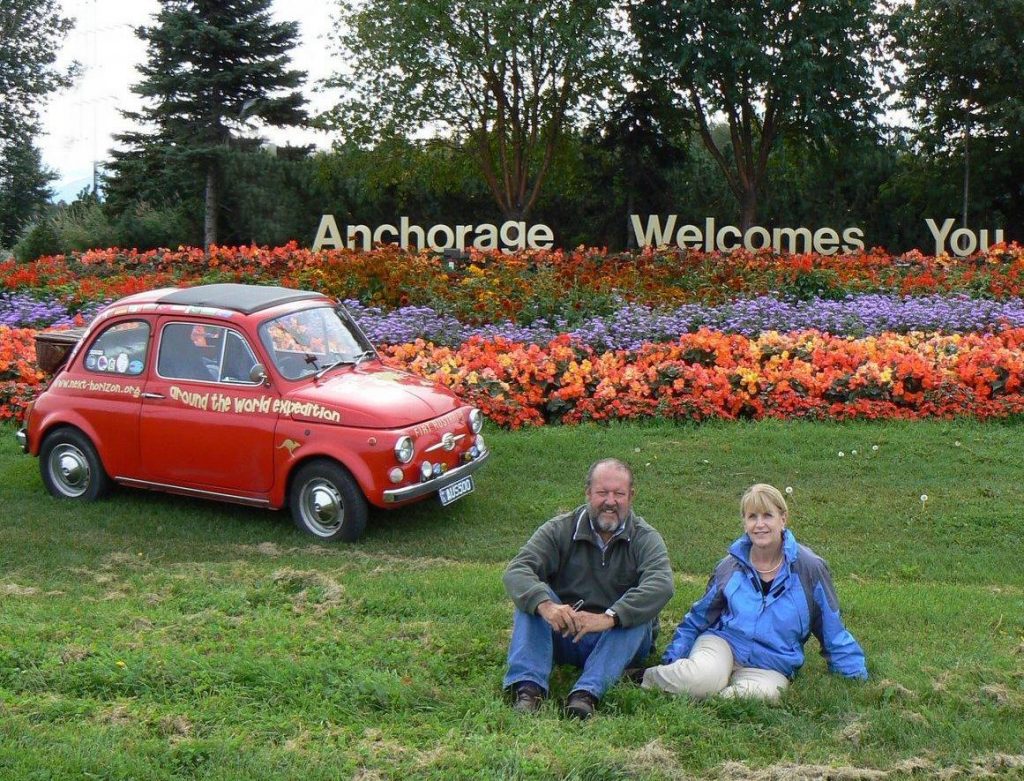
End of Trip Anchorage 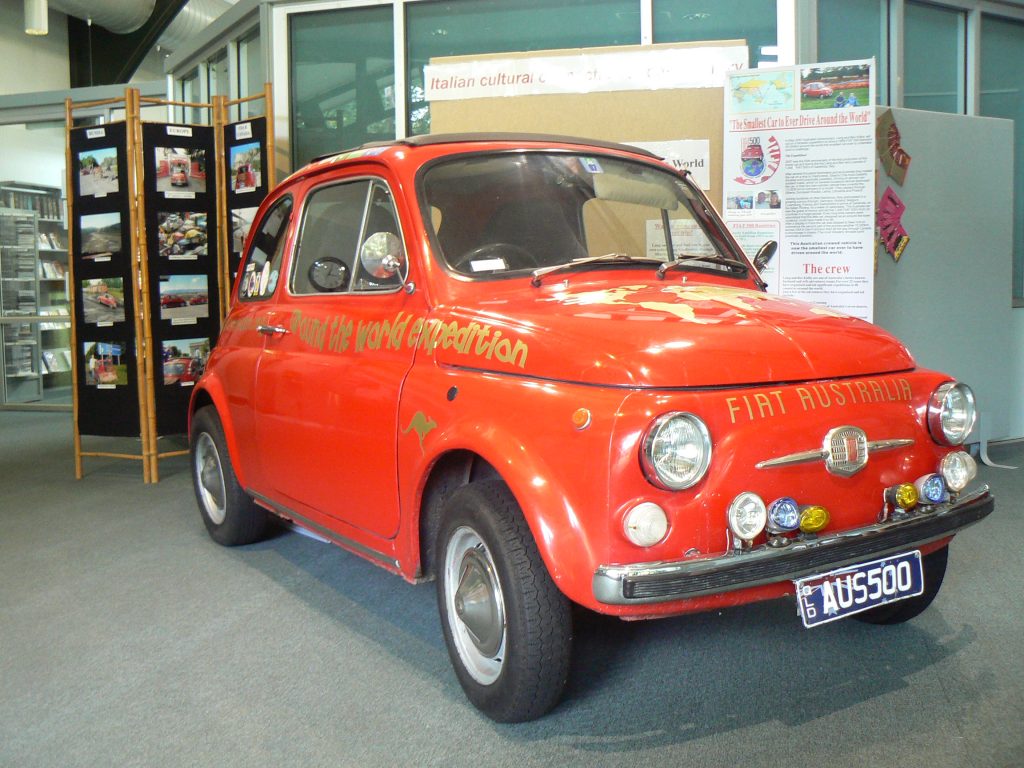
Home again at Brisbane Motor Show
Brisbane – 8 May 2007
After chasing the ship 1,000km from Brisbane to Sydney and getting on at the last moment, the Bambino set off on its adventure aboard the “TAKOE”. As a roll-on roll-off vessel it enabled us to not only transport the car at around half the price of putting it in a container but allows a quick departure on arrival with no unpacking.
We anticipated starting our adventure from Vladivostok about 10 May but unfortunately the feeder ship from Yokohama to Vladivostok was so full they could not find room for even a Bambino. After languishing on the dock in Japan for a couple of extra weeks it is now arriving in Russia on 25 May.
Lang and I fly out of Brisbane via Seoul on 21 May and with luck will be on the road a few days later. Previous experience with Russian Customs makes us hopeful there will be little delay getting out of the dock gate in Vladivostok.
We will then have about a month to cover 12,000km to meet the rest of the Bambino fleet in Kiel, Northern Germany, for the big convoy across Europe to the FIAT 500 50th birthday party in Garlenda, Italy.
Vladivostok – 28 May
The Red Rodent is at present in the car park of the Vladivostok Hotel, and at 6.00am tomorrow the adventure begins.
We arrived in Vladivostok late on Friday afternoon in torrential rain, after two nights in Seoul enroute. We immediately made contact with our shipping agent and were told that nothing was going to happen over the weekend. He did meet with us on Saturday morning and a few papers were signed and copies made of passports etc. The shipping agent agreed as a ‘one off’ to do our clearances for us and now, after observing the whole procedure, we are eternally grateful that they decided to help us in this way.
We resigned ourselves to the wait, and spent the weekend sight seeing around Vladivostok, which is on a peninsular with many very pretty waterfront areas. Lang managed to find the enevitable flea market. Yesterday was sunny and there was a real festive air with all the locals out in force on their day off. Lang enjoys ogling the very attractive Russian ladies all in the very latest fashions.
Today at 9.00am on the dot we were back at the shipping agent’s office. With more forms to sign, then traipsing after Alexander through insurance, customs, banks etc we filled in a few more hours. While we were in line at the customs the window was slammed closed at 3.45 and opened again at 4.15 – I guess it was afternoon tea time. More windows, more payments and more waiting but at 6.30, while patiently waiting at the port, we were rewarded by the sight of Alexander driving the Red Rodent towards us.
A few things have disappeared and a few small things are broken but essentially the car is all in one piece.
We have spoken to all sorts of people trying to get some idea of the condition of the road from here to Ulaan Ude, and have very differing reports. It seems NOBODY has travelled west to east and all those traveling towards Moscow have of course disappeared. We are going to try to put in some really long hours and make it through to Irkutsk (4022kms)in five days.
Chita – 2 June
We have been out of communication for the last five days in some of the remotest country on earth and enduring the worst road conditions I have ever experienced.
In 2004 President Putin declared open the section of road we have just travelled from Vladivostok to Chita, so vehicles could drive with ease the 10,000kms from East to West. I will confirm that there is a road, with hundreds of cars on it at any one time. The condition is unbelievable, less than 20% is sealed and much of the unsealed parts are not maintained at all.
The first day to Khabarovsk we covered 750kms in 13 hours and were quite pleased with ourselves. We then did two more 13 hour days to Belogorsk and then Skovorodino covering 650 then 550kms respectively. Next day we decided to do a gut buster and were on the road for 18 hours – thank heavens for long day light hours, and we covered 625km! This was a section where we were back on the original unmaintained road? plus many kilometres under construction with regular detours off into the shrubbery.
The whole road works program is the most massive undertaking and it will be many more years until there is a beautiful sealed road the whole way. The volume of traffic is huge as all the new trucks, buses and cars shipped from Japan to Vladivostok use the roadway. The drivers put tape all over the cars for protection and then travel in groups all the way through Chita or on to Moscow.
Unfortunately the conditions took their toll on our bambino and we limped into Chita at midday today and straight to a mechanic’s workshop. I left Lang and the car there after they discovered the front springs bent and a broken kingpin.
Lang said he will elaborate in mechanics speak when he has some free time.
That part of the trip was not pleasent but incidents along the way make up for so much and make travelling worthwhile. At one place we were filling with fuel and asked a bystander where to get some food. It was a case of follow me and we ended up at a little cake shop and were served coffee and cake and the owner refused to take any money.
The third night we went into an small town where there was one gastinitsa (hotel) but for some reason we had to wait until 9pm to see if a one-bed room was available. While we waited Lang was doing some maintenance on the car and we attracted the usual crowd. A young man had a little English and a guest at the hotel who could speak perfect English took it upon themselves to organise a twin room at a local apartment building, as well as for the car to be parked at the local police satation. These multi storey soviet era apartment buildings look almost derelict from the outsde but are made very comfortable inside.
Last night we came into the village at 11pm just after dark and started asking if there was a hotel. Two men out walking indicated nyet (no) but then had a discussion, and again it was follow me. We were then handed over to another man and he opened the gates to a yard, took us inside and indicated two beds in what was the kitchen area of a very simple house.
We were then shown the banya ( sauna) at the back of the house and handed two towels. The banya is very much part of Russian culture and there is quite a ritual involved with them. This time we just used it to clean off the dust from a long day’s drive. I will describe a banya more at a later date. Needless to say it was lovely to clean up, have our cups of tea and fall exhausted into bed, and the best part was to experience at first hand the lives of the local people.
I will give more detail after we reach Irkutsk in two day’s time. I now must away to find out the fate of the Bambino
Bev
Irkutsk – 4 June
We arrived in Irkutsk at 2pm today. It was surprisingly all very familiar from being here two years ago. We have made contact with Sergey and Nadia who were the fixers for the ABC film crew while we were in Russia on the Peking Paris trip, and have been invited to Sergey’s place tonight.
I left you last time in Chita, and Lang is at present doing a report on the car and roads so I will skip that only to say, I waited patiently at the hotel until 8pm thinking he was having all sorts of problem with the car which was true to some extent but when the work was finished the owner of the garage put on a meal for his staff and Lang was invited.
While I was at the internet dutifully doing a report and hence not contactable (Lang had tried !) I ran into a fellow Queenslander – Ken Taylor who we first met in Vladivostok. Ken lives at Maleny and he is riding a motorbike across Russia and Europe to Ireland to visit his family. Needless to say he and I went out and had a meal, to celebrate surviving THE road.
From Chita on Sunday and on sealed roads again, but still of dubious condition in sections, we did 800kms, bypassing Ulan Ude and made it to a resort hotel on the edge of Lake Baikal. We had stayed in this particular place last time we came through.
Today we spent the first few hours taking everything out of the car and did a big repack. At Vladivostok we just jammed everything in, as it was cold and wet on our first day and we just went. Hence for the last week we have been living in the same clothes and rinsing out the essentials as need be.
Our main aim is to make as much headway as we can. Lang always said Irkutsk was our first big hurdle as from now on everything is a little more accessible. So having made it here puts us more than a third of the way across Russia. The two week delay with the shipping left time fairly tight and as we only have a tourist visa so now have until the 21st to get to the Latvian border.
We will post some photos when we get a chance. Today the scenery around the lake was beautiful with snow covered mountains in the background.
Bev
Vladivostok Road – 6 June
A Fiat 500 is probably not the ideal vehicle to take on the 4,000km trip from Vladivostok to Irkutsk along the new Trans-Siberian Highway. As an indication it provides proof that if you have 4 wheels (or 2) of any description the journey is possible.
The little Fiat was collected from the dock in Vladivostok after its arrival from Australia with surprisingly little in the way of bureaucratic drama. It was packed beyond any possible weight limit envisaged by Fiat back in 1957. Short of Bev removing her G-string (which had already replaced panties as a weight-saving measure) and the crew undergoing daily laxative purging there was little we could do to lighten further.
Russian roads generally have excellent signs, much better than many western countries, but unfortunately Vladivostok was the exception. On the way out of town we detoured via the gates of a Mental Institution and the car park of a chicken-plucking factory before finding the road to Khabarovsk.
I slipped up by not realizing the Asian influence on Far Eastern Russia and the question “Is this the road to Khabarovsk?” will ALWAYS get a “yes” response from someone wanting to tell you what you want to hear. The correct method is to choose a group of 3 people and ask “Which way to Khabarovsk?”. You then select the direction from the three possible offered solutions of the person with the most reliable appearance.
The 700-odd kilometres leading north to the large city of Khabarovsk was quite a busy narrow highway. The sealed surface was mostly reasonable but the usual pot-holed sections were ever present. About 50 kilometres of the road were under repair. This is a defining feature of Russian roads as there is absolutely no compunction by the road builders to facilitate traffic flow past the work site.
A detour is built with one pass of a bulldozer – often many kilometres long – and nothing further is done even if say, the bridge construction is to take a year. The grader driver working 30 metres away from the detour on the new works would absolutely not consider it his duty to run his blade occasionally over the main traffic route. The result is lines of cars grinding away in first gear at walking pace and quite large trucks disappearing into pot-holes, never to be seen again!
We found the little Fiat to have some advantages in this rough going with the wheels only a metre apart and good suspension travel. Unfortunately the weight caused regular bottoming on the spring bump-stops despite our most cautious efforts. A plus to the low speed was a fuel consumption of around 20k/l or 60mpg. The little car with its Australian numberplates was the constant subject of tooting and waving. It always draws a crowd at any stop.
We have found that the roads often have many kilometres of no-passing lines on dead straight sections. The reasons for this are known only to God and Russian road engineers! After being caught on a stream of traffic behind a slow moving truck you finally get a break just in time to be pulled over in a random check of car papers by one of the regular police posts. Of course they see our strange little car coming down the road and we are 100% unlucky to be “randomly” pulled over.
The farce goes on for about 5 minutes while they look at your International Driver’s Licence upside down (not one as yet has found the folding back page which has photo and identification details – they just study the Chinese, French, German and Arabic explanation pages and hand it back). A further couple of minutes are wasted while all traffic is stopped so the entire police unit can gather around the car for a group photo. Meanwhile the truck you fought so hard to pass has wandered through the checkpoint and you have to start all over again.
Anyhow we finally arrived in Khabarovsk after a fairly easy 12 or 13 hour 700km drive. It is a pretty tree-lined city on the huge Amur River (which also forms the border with China). The Fiat went very well and we have every confidence it will continue to do so. I am trying to keep it conservative and 80kph seems a good easy speed and few roads will allow more than this as the short wheelbase makes the car like a bucking bronco on the undulating highway surfaces.
We are extremely pleased that an effort was made to replace the original kindergarten chair perches provided by FIAT with second-hand Holden Barina seats. Although cramped, both Bev and I are very comfortable for long periods.
Leaving Khabarovsk over the 3 kilometre long Amur Bridge we now were officially on “The Road”. Amazingly there was not officially or practically a road across Russia until 1994. Only a few years prior to that only four wheel drives could make the crossing and then only during very small weather periods of the year. Of course there were the gallant few who had taken every description of vehicle and motorcycle through but many finished up being towed to the nearest Trans-Siberian Railway stop and placed on a train (that is if the vehicle was not just abandoned).
President Putin declared the road open in 2004 then hopped on his helicopter and flew home. The road could not be considered “open” even 3 years later. It is just under 2,400km from Khabarovsk to Chita where the main sealed road all the way to Moscow really begins. Of this distance, around 1,800 km is still gravel, dirt and indeed, farm track.
Billions of dollars are being spent on the construction of the road. The standard of alignment is very impressive and is being done to full western freeway standards. Vast amounts of earth have been moved, tops of hills shifted into valleys, hundreds of bridges constructed and work continues. The seemingly small amount of machinery undertaking this work has impressed me. But, on the other hand, there are no unions in Russia and work goes on 24 hours a day, seven days a week in 12 hour shifts. The construction workers live in pretty basic conditions in small camps alongside the road.
Having said the alignment impresses me, the same can not be said for the completion. The base road sweeps through the countryside but the surface is huge rocks, bulldozer tracks and holes a metre deep for hundreds of kilometres at a time. Why they do not finish sections progressively has me beat.
The surface creates problems for vehicles on a scale not seen before. For hour after hour you crawl along in first or second gear, bouncing from rock to rock, hole to hole. The noises coming from underneath our little car were horrendous. One day we started at 5.00am and continued until 11.30pm (with an hour gained from a time change). During 18 hours actual driving time the little Fiat covered 600km at an average speed of around 30kph!
During the second-last day before Chita I noticed the steering becoming very heavy (on those 50 metre sections smooth enough to get any feel). A quick check revealed the right-hand front wheel leaning at an angle of about 20 degrees. Jacking the car up I found the wheel could be rocked 75mm side to side at the top. I diagnosed that the bronze king-pin bushes had completely collapsed but guessed that if we took it easy we could make it into Chita. This is what we did but, after only a few hundred kilometres, the new front tyres were totally scrubbed out from the gross wheel misalignment.
The world’s best bush mechanics, the Russians, removed the front wheel and I took a deep breath! The kingpin itself had actually snapped in half. Assuming the rigid pin was just flopping around in a large hole I had pressed on, thinking that although loose, the wheel was totally secure to the car. Once the pin had separated into two halves the possibility that the front wheel would depart the vehicle was very real. We were very lucky!
Anyhow the boys found a suitable high-tensile bolt (of course no 1969 Fiat 500 parts are available in Chita) placed it on the lathe and produced a new king-pin the equal of anything which has born a Fiat label. With a new wheel alignment and the nearly bald front tyres placed on the rear until I can find some new ones closer to Europe we are again sailing along.
The only other problems encountered were the fuel outlet from the fuel pump coming adrift, a rock being caught in the fan belt, the spot-lights falling off, the oil-temperature sender being smashed off the sump by a rock and our fabulous AUS-500 number plate being crushed in a bottomless pot-hole.
Obviously this is written from a Fiat 500 point of view. Quite frankly I could not think of a less suitable vehicle to be doing a trip over the Siberian Highway unless it was a low-slung sports car. The care and constant attention required while driving up to 18 hours a day made this journey something of a marathon. Although we nursed our baby it was not possible to avoid constant pounding and I am amazed that this little car gave us such a good ride and came out as unscathed as it has. Now we are back on “good” Russian highway it is driving as well as it was when we left Brisbane.
The road is open to anyone willing to batter his or her vehicle. The constant stream of late-model Japanese cars being driven from Vladivostok to Moscow demonstrate this. Although these delivery drivers cover the cars with tape, fasten extension boards to the mud-flaps to stop stone damage and drive amazingly slowly on rough road their machines take a serious battering. There has been a huge turn-around with the drivers in the two years since we last drove in Russia. In 2005 the Vladivostok cars were being driven at insane speeds, being involved in many, often fatal, accidents and arriving in Moscow ready for sale as complete wrecks.
The solution was easy. The dealers who employ the drivers to pick up the cars for the 2-week trip across Russia now take ALL damage out of the driver’s $500 wage. If the damage exceeds his wage the driver must pay the difference to the dealer out of his own pocket. No wonder they now drive them like their own car!
Anyone considering taking what is still one of the great adventure drives of the world should not be put off by the conditions. The countryside is beautiful, ranging from rolling grassland, to high hills, forests, rivers and subsistence farming villages. Most of the country is similar to NorthWest USA and Eastern Australia.
Fuel is available at regular intervals with 92 and 95 octane everywhere and 98 octane at most spots. Of course diesel is available everywhere. As the road improves small fuel stops are springing up and no vehicle requires long-range tanks or extra fuel cans. The little huts which make up the “truck stops” dot the road and fabulous blinnies (light pancakes) are the breakfast highlight. Tasty soups, shashlicks and other food is on hand no more than 50 kilometres apart.
A word should be said about the greatest highlight of Russian roads – the fuel stop outdoor toilets. Enough description of these hellholes is probably suggested by the thought that if you had a 5-kilogram bar of gold in your back pocket and it dropped out while you were in the toilet, you would not bother to retrieve it!
Lang
Novosibirsk – 8 June
We arrived in Novosibirsk late yesterday afternoon after making over 500kms for the day. When we arrived we saw an Austin 7 in the car park of the hotel, and another rolled in a few hours later. These cars belong to two British couples who are doing the Peking Paris route. Also at the hotel are the British organisers for the 120 car strong Peking Paris Rally. They are due in to town late today. Our Itala is part of the group, doing the trip for the second time. It will be probably wise to stay ahead of this gaggle as they will book out the towns as they come through.
The last few days have been very special. Firstly, we had a lovely night at Sergey’s apartment in Irkutsk. We met with his wife Olga their two young daughters, Sergey’s mother and Nadia who was also on our Peking Paris trip. Both Sergey and Nadia speak perfect English so we had a great catch up and thank them very much for their hospitality.
From Irkutsk we actually were on better roads and did a long 800km day to Kansk. Lang had been worried that since our front end trouble the front tyres had been scrubbed down and he had been rotating them. Next morning we went into Krasnoyarsk and started looking for tyre places. After many hours and not much luck we found a place that sold us two a little wider than the originals. On every little bump there was awful graunching as they hit the mudguards, but we seemed to have no alternative. On driving out of town we saw a tyre flea market with dozens of stalls with piles of tyres. Amongst all of these we managed to get two the same as our originals, so we abandoned our newly bought ones and had the new Russian tyres fitted and away we zoomed.
Since doing the trip two years ago I have remained in touch with a number of the wonderful people we met along the way. Any of you who have seen the ABC Peking Paris documentary will remember Roman and his mother Olga who, while we were camped one night, came out to our campsite with loads of food and stayed with us around the camp fire laughing and singing, eating and drinking. We had arranged to again call into their village on our way through.
As we were coming down the road in the afternoon there were two Fiat cars on the roadside and we were flagged down by Leonid, Olga’s husband waving a Russian flag. We were escorted into the village where Olga was waiting with a traditional cake that we had to break a piece off and eat immediately. We were ushered inside and there was a table stacked with a huge feast of home cooked goodies. For the next many hours we laughed and sang and ate and drank.. As none of them speak English, Olga had invited the English teacher from the local school and Valya was our interpreter, during our stay. She was kept very busy but it made the whole visit so much easier. Also present were their daughter Anna, and son Dimitry, a neighbour Lena and Leonid’s father. Unfortunately Roman was in the middle of his exams at university in Krasnoyarsk and we missed seeing him.
Before we went to bed we went to Lena’s house where we had the full-on banya. Lang and Leonid went first and then Olga and Lena took me. I was told to strip and given a robe then we entered the steam room where there is a furnace heating rocks. As there is no running water there are urns containing hot and cold water and with long handled ladles with which you put warm water in a large basin. I shed the robe and commence washing. They took over and I had my hair washed and was rubbed down with a looffa. I was then instructed to lay on the wooden bench that had been cooled with cold water and Olga took the bunch of birch leaves and hit me all over with them. She would throw water on the rocks and make the leaves hot in the steam and then repeat the process with cooler leaves. The heat was like a sauna and I can see when it gets to –40 in the winter how wonderful this ritual would be. I thoroughly enjoyed the experience and after the customary beer (I opted for tea) we were than more than ready for bed. Again in the morning we had a huge breakfast and were sent off with bags of food and drink for the road.
We were given loads of presents. Leonid who is a professional hunter gave Lang a hunting knife and a mounted deers head. The mayor of the village, Olga, visited us and gave us a traditional birch bark basket with pine cones and pine nuts in it, and some local flags.
We were completely overwhelmed by the hospitality and generosity we received and this is a memory we will always treasure. Thank you very much to the Khvidzevich family for such a wonderful experience.
Bev
Omsk – 9 June
We did another 700km day yesterday to Omsk, the road was good and we are making good time. Omsk is such a pretty place here on the river Irysh, that we have decided to have our first lay-day since being on the road.
I am looking out our hotel window at barges going down the river, Lang in the carpark doing a few things on the car and over the road, a stream of limousines arriving almost every 10 minutes to what I presume must be a registry office with bridal parties in all their finery. So far in a few hours I have seen about twenty brides.
The weather is cool but fine, much like we have experienced most days since getting to Russia.
Since starting our trip the scenery has been lovely. Siberia’s taiga is the worlds largest forest, made up of fir, pine, larch and spruce trees. This gives way to the steppe where everything looks green and lush.We are seeing it in spring with all the new green growth.
Two little squirrels are the only native animals we have seen so far, but plenty of domestic animals. Most families in the villages own a cow that they milk each day. Olga milked their cow both night and morning while we were there and there were also some hens in the barn.
We are having a discussion on the car’s name. Since it has been so faithful, the name Red Rodent does not seem endearing enough. Everyone here in Russia comes up and says “malenkiy” which means little or “malysh” which is the Russian “little one” equivilent to Bambino. So while in Russia we have adopted these names.
On the trip we have our mascot Bertie the Brooklands Bear with us. Bertie was given to Lang and Peter by Prince Michael of Kent at the start of the Vimy trip. Bertie has been on every trip since. At one stage Prince Michael asked for him back to go on one of his trips but we decided Bertie was ours and we applied to Brooklands and we now have his official adoption papers. He still wears his flying suit that was made by Gieve and Hawke of 1 Saville Row, London.
Bev
Ekateringburg – 11 June
Today we arrived in Ekaterinburg after a 620km drive, which hopefully will be the last of our marathon drives. We have left Siberia and entered the Urals, which are a low range of mountains stretching north south for 2,000kms. For centuries they have been vital to Russia as a source of metals and minerals and have given rise to a number of industrial cities such as Ekateringburg and Perm, which will be our next overnight stop.
Ekateringburg is probably most famous as the place where Tsar Nicholas 11 and his family were murdered by the Bolsheviks in 1918. In the city there are many magnificent statues, museums and variety of architecture. The Church of Blood dominates and has been built to honour the Romanov family, now elevated to the status of saints.
Last Saturday in Omsk we had another nice encounter. On Friday I had been talking to a young Russian, Dimitry, who had seen the car and wanted to know about our travels. He had been learning English for only 8 months and we were able to have quite a passable conversation together. Before leaving he told me he was a chef and would we like to come to the restaurant where he worked for lunch the next day, to try some Russian cuisine. In the morning he rang the hotel to make sure we were still coming. Dimitry was at the door to greet us and ushered us into a small side room with lovely décor and a beautifully set table for two. In the main part of the restaurant there was a wedding reception in progress so we were able to peek at the proceedings.
We left it to Dimitry to decide the ordering and after four courses and a bottle of wine we were very well sated. He waited on us very attentively and we found out during the meal that this was actually his day off, and he was doing this as a special favor. The meal was not overly expensive, nothing compared to the experience
Less than half an hour after leaving Omsk early on Sunday morning they was a loud CRUNCH and we stopped with Lang saying this is serious ******! He thought we had broken an axle, or done something to the gearbox. We pushed the car off the road onto the footpath and he jacked it up and when he pulled it apart found it was the splines on the axle drive shaft completely worn down. A taxi driver pulled up and Lang went off with him to try to find a workshop. Firstly one that was open on a Sunday, and secondly understood what was needed.
I stayed with the car and over the next five hours encountered all types of people trying to help. Most seemed incredulous that a woman was on her own and obviously there was a serious problem. One chap who had had his fair share of vodka kept patting me and then presented me with some wildflowers. Lang arrived back in the same taxi, a tow truck had been organised and off we all went to a Toyota repair shop. When I say all, it was a whole convoy of adopted protectors who had been on their mobile phones finding some English speaking friends to join in.
At the workshop tools were downed and we got preferential treatment, going straight up on a hoist for a quick repair. So we could stay mobile and not sit waiting days for a new part, they welded the axle directly to the drive flange on the wheel. Lang decided that was acceptable to get us to Poland where repairs and parts are available. We are hoping the rubber drive blocks take up the movement originally provided by the now welded spines and do not put too much strain on the gearbox.
We had a noisy farewell with lots of cheering and photos when at 2pm and we were on the road again and made the 320kms to Ishim for an over night stop before today’s run into Ekaterinaberg.
Tonight we are meeting up with Sergey and Dasha Starkov. They are a young local couple who we met by chance at a restaurant in Ekateringburg in 2005. They both speak excellent english and became our guides through the city while the ABC did their filming for the Peking Paris documentary.
Also today we passed the two Austin 7’s from the UK doing Peking Paris and tonight we are staying in the same hotel. It was raining most of today and we were snug in our little Malysh while they were freezing in their small open cars.
Bev
Vladimir – 14 June
We arrived in Kazan late yesterday after a 600km drive from Perm. So much for shorter days, but Lang is a concerned about our temporary fix on the car and wants to get to Poland where they have Niki parts and a better understanding of Fiats. We should cross the border into Latvia on Saturday.
I am trying to type this on my knee as we drive along as so far today the roads are a little better. From Ekaterinaburg you get sections of road where you think things are going to improve and then it all turns to worms yet again.
We have now left the Urals and have come into the Volga region which extends from the Urals to Moscow. Just out of Ekaterinaburg we crossed from the continent of Asia into Europe. This is identified by an impressive roadside border marker, as well as the ancient league marker on a black and white striped pole.
Kazan, where we were last night, is situated on the Volga and we drove over this majestic river going into the city and out again this morning. Kazan has quite a different atmosphere to the other Russian cities we have already traveled through. It has a more European look, and sadly the first McDonalds we have encountered, but also a strong Asian link because of the Tartar heritage.
The Tartars were Mongolian invaders dating back to the days of Genghis Khan, and even today they have their own language and flag, which flies beside the Russian flag on most buildings. The town is famous for the historic kremlin situated on the banks of the Volga with spectacular blue and white painted churches with gold domes all surrounded by a high white wall. Throughout the town there are also many beautiful mosques.
It was a cold rainy afternoon when we got to the hotel in Perm. While Lang was unpacking the car a young girl who could speak English was asking about our trip and offered to come back in the evening to show us around. The whole town was in party mode as not only was it a holiday for Russian Independence Day but also the town’s birthday.
Perm is known as an industrial town that not many foreigners visit. Svetlana, Mikhail, and their friend Rosa showed us the river Kama and some lovely buildings and parks and the inevitable imposing Lenin statue. Later they took us to a Tartar restaurant where we reclined on cushions under silk drapes. They explained the town was only very young, a few centuries old, which makes you laugh when you come from Australia. Perm, along with other Eastern Russian cities, was a closed city during communism as most had sensitive military installations and were kept restricted.
While in Perm we caught up with Kip and Carmen, Annabelle and Sebastian the English people who are doing the Peking Paris route in their Austin 7’s. We envied their “huge” 750cc engines but not their exposed driving positions. They had had a miserable few days in their open vehicles but as we left them in our wake the weather has improved.
Lang has been doing most of the driving while we are on these terrible roads. He prefers to drive and I am a happy passenger. I believe, after years of experience, it is better to be sympathetic rather than guilty if something happens to Malysh while we are so isolated. Actually the passenger does have the job of indicating if we can pass and yes, we do really pass many vehicles. Driving a right-hand-drive car has its drawbacks, although it is not uncommon here in Russia with so many imported cars from Japan.
We are an obvious target for the police at the regular roadside stations, and get pulled up many times a day. Sometimes they go through all our paperwork minutely or just read the explanation of our trip we have written in Russian and wave us on. Twice Lang has been stopped and a radar gun waved in his face with animated Russian accusations. Each time after politely saying we do not speak Russian they have got frustrated and told us to go.
We have only had one attempt at police extortion when, at one of the many checkpoints Lang was taken from the car for the first time into the police building. He was told he had a headlight out (they actually were both out as they were not turned on!) and there was a “serious” offence. When asked if he wanted money the policeman wrote down 50 rubles ($2.50). Lang told him – in front of 3 of his mates – that he was a crook and shyster and came out to the car to get the money. Soon the cop also came out laughing and back slapping saying he had just read the Russian translation of our trip details and it was all just a joke (and please don’t put it in the book).
Bev
The Fiat and Russia
We are now at the one-third point of our trip around the world.
The speedo on the Bambino just clicked over 11,000 kilometres in less than 3 weeks. This has been nearly all in Russia on pretty terrible roads for most of the way. Cruise speed on the up-until-now rare smooth roads is 80kph and maximum speed for passing is 85kph so there have been a LOT of hours on the road.
As previously mentioned, the FIAT 500 has been fighting seriously above its weight class and has been treated brutally. The atrocious Russian roads have given the suspension and drive-train a very hard time.
Apart from the broken kingpin, the front transverse spring has been flattened and the front wheels now sit sloping in at the top instead of out as normal. It took me quite a number of gradual adjustments, using trial and error, to the tie-rods to get the toe-in set up to cater for the weird camber. I have become expert in detecting the slightest uneven wear on the front tyres and think they can be saved until Garlenda in Italy before replacement for the American section. Of course the rear tyres are our Russian replacements for the two destroyed during the broken kingpin drama on the Vladivostok road. Despite the Russians turning their noses up at their own product they seem to be soldiering on valiantly with no sign of wear.
Amazingly the hardest worked items- the shock absorbers – are still working perfectly. I have to remind myself constantly that the Bambino is loaded far in excess of manufacturer’s limits and all warranties are null and void. There was probably something in the original warranty about excessive abuse of the vehicle and off-road driving.
The hard work put in once again by Angelo in Brisbane, assisted by his young apprentice Damien, has certainly paid off in the heart of the car. Hours spent fitting metal lock tabs to every conceivable nut and bolt, adding nylock nuts and even drilling and lock-wiring a number has resulted in NOT ONE nut or bolt needing tightening after hundreds of miles of corrugations (washboard) and constant violent pounding through pot-holes. For those familiar with Bambinos this is a miracle.
The engine is just amazing. It has not missed a beat (apart from a fuel line coming off the pump and a rock jammed in the fan pulley). I did engine and gearbox oil changes in Chita after about 5,000km on the rough road and will do one again in Poland after another 6,500km. Despite recommendations I decided not to touch the engine – “If it ain’t broke don’t fix it!” It is still operating on its original points, plugs and condenser and tappet settings. It starts instantly hot or cold and is still producing 20 massive horsepower. I will do all the changes at our major service in Poland.
The oil is still like honey after well over 5,000km since Chita and I have just used the last of a 1-litre oil bottle. I would say, by any standards, that is amazing reliability and performance out of a seriously overworked baby engine. The engine was not new or totally overhauled to start with.
Despite the steering geometry being “modified’ from original by circumstances, the car drives very well indeed. On rough surfaces the short wheelbase tends to make it steer like a go-cart but we have never had any serious situations and after 10 or 12 hours on the road we arrive still in reasonably good humour.
An excellent decision was the fitting of oil temperature, oil pressure and ammeter gauges. The original lights give you notice that the priest should be called for the last rites. The gauges give lots of information on impending failure and there is an opportunity to do something before major damage. It is interesting how outside air temperature affects the oil temperature and how quickly it rises and falls after a climb up a long hill. Of course the oil pressure moves up and down with the temperature (multi-grade oils are a bit of an over rated item and don’t seem to compensate for temperature much better than the old single grade). The enlarged aluminium oil pan with extra capacity and cooling relieves much of the temperature extremes that must exist with the original small oil pan.
When I refueled this morning it was of a brand I had not used before (there are many in Russia). I filled with 96 octane. We have been using 95-98 octane fuel all the way where available just to allow a bit of leeway with the timing and maybe help the engine a little. There is no discernable performance difference over the usual 92 octane found everywhere. Fuel prices are around 65 US cents a litre.
I noticed the colour to be a strange yellow but did not think anything of it. Within a few minutes the oil temperature had climbed to around 100 deg C, way above the normal 70-80 deg. I tried to think of all the reasons (timing, valves, leaking head gasket, blocked air filter) but kept coming back to the far too coincidental refuel.
As soon as half a tank had been used I refueled again and the temperature dropped to 90 deg. Obviously the fuel was the problem as the contaminated (probably with diesel) tank dropped its effect when diluted. I ran this second tank almost dry then, after refueling again, I saw temperatures back at their old mark. It would have been impossible to even know temperatures were high and that there was a problem with warning lights alone.
A few small jobs need doing in Poland. Every wheel rim is slightly bent from hitting pot holes or rocks. Both door locks have broken (they were cracked when the car was purchased and then welded but the constant pounding has caused them to fall apart). The previously mentioned axle drive flange, temporarily welded, will have to be replaced. Unfortunately the axle will have to be cut to get it out now so that will be new also. General impression at this stage – an amazing little car!
Lang
Russian Border – 18 June
Our Malysh has given sterling service to get us a third of our way across the world. We left Russia after 23 days. Crossing the border into the EU frees us up from a lot of constraints with visas and car insurance, both of which will expire after one month and would not be renewed easily. This was our own doing but longer is always more costly.
We have found Russia is a country bound by rules and regulations leaving no room for any initiative or flexibility. On the other hand it is a country of very friendly, generous people, and we leave it having had some very wonderful experiences.
During our drive east to west we have crossed 7 time zones so I guess that in itself shows the distance traveled. The changes in time have worked to our advantage, as at the end of a long day you suddenly realise you can put your watch back an hour. Also the long daylight hours are great when you are travelling. During summer in St Petersburg the White Night Arts Festival lasts the whole of June.
It has been very worthwhile taking the time to learn the Cyrillic alphabet. There are six letters that are the same as ours, others that are familiar, for example r is g, h is n, p is r and then they use symbols that are unfamiliar to us, rather like the Greek alphabet.
The food is great at the truck stops along the roadside, and again to learn how to say a few of the basic dishes means you are not faced with an unpleasant surprise.
Since being here two years ago inflation is very noticeable, as everything seems to have doubled in price. Even across Siberia the prices of hotels were more expensive than we would pay at home. Everywhere we have been has been clean even if it has been pretty dilapidated. Not the same can be said for the toilets, which are basic to say the least, but as you dare not touch anything are probably more hygienic than our western style. A few tips are to wear enclosed shoes, not to take anything loose in your hand and wet wipes are definitely a travel necessity.
From Kazan we did a 500+ day and spent the night in Vladimir. Here we started to see for the first time tour buses. From there it was only 170 kms to the outskirts of Moscow on a four lane divided road. We had decided to not visit Moscow but drive around the ring road. The 43 kms took one and half hours on a clogged twelve lane divided road.
That night we stayed in Velikye Luki a town 162kms before the border. Driving off the highway we thought it was just going into a small village but it was quite large town and they had just hosted a hot air balloon festival with entrants from all over Europe.
On Saturday we arrived at the border at 10am in pouring rain and proceeded from one booth to the next. I have no idea what takes the time but it was two and a half hours later that we found ourselves in Latvia. I don’t know how the truck drivers cope as on the Latvian side we drove for at least four kms past a line of stationary trucks waiting to be processed, and then we turned and still did not see the end of the line.
The road surface improves immediately, and the whole countryside takes on a more European look. We drove to the next border with Lithuania in two and three quarter hours and although at each crossing you are required to show your passports and the car’s papers there was no hold up. All these Baltic countries have been members of the EU since 2004 but they still operate with their own currency.
On Saturday night we stayed in Kaunus the second largest city in Lithuania and from there did a short run into Poland. We made a beeline for a resort town, Gizycko that we stayed in two years ago. It is on large lake and has a real holiday atmosphere. It was a beautiful sunny day so we bought the makings of a picnic and sat on the side of the canal to eat lunch and watch the locals sail by in their yachts.
From here we are definitely going to take things a little easier. Lang spent a few hours replacing spark plugs, fan belts etc on the car but we now must look for somewhere to do the major work of repairing the temporary fix on the axle.
Bev
Hamburg – 21 June
A change of plans and only two nights were spent Poland. From the very picturesque lake area in Poland we headed for Gdansk, a beautiful old city on the Baltic Sea. Along the way we called into Fiat Service centres, and in Gdansk they rang everywhere and were only able to come up with a secondhand axle.
Lang made a request to the Fiat 500 contacts we had in Europe and a flood of help came back. As a consequence we are now in Rellingen, a suburb of Hamburg at the workshop of Torsten Hanekamp, and judging by the Fiats in his yard and the stacks of spare parts we are in the best place possible.
Enroute we had another night in Poland at a rather crass seaside resort town, Mielno. I would have loved to spend more time in Poland as it is a fascinating country with the most incredible history. For hundreds of years the whole country was non-existent, and now it appears as a thriving very modern country. We crossed the border with no hassle into Germany at Szczecin, and then straight down the wonderfully smooth autobahn into Hamburg. The autobahns are pretty boring but a very efficient way to cross the country quickly.
The work was started on the car first thing Wednesday morning and unlike its two elderly owners our little bambino (now we are in Europe I can only think of it as our “Bambino”) has had a full going over with nothing left to chance. I will leave it to Lang to detail the work done but I know we will depart here with the car in the best condition possible for the rest of the trip.
I know Lang feels we have got over our biggest hurdle so far, if not the biggest of the whole trip. Having made it to Germany under our own power we now have a car that will be more reliable and he understands better. After the pounding through Russia we knew anything could break at any time.
At Torsten’s workshop there are a number of people preparing their 500’s for he trip to Italy, and the festivities in Milan and Garlenda.
Yesterday while the work was underway I took the opportunity to go into Hamburg on the train. I did the tourist thing and did a two hour double decker bus tour of the city. In a short space of time it is the best way to see and get he feel of a city. The city is shaped by water. Three rivers – the Elbe, the Alster and the Bille, traverse it, as does a grid of narrow canals called Fleete. The port is huge –one of the largest in Europe.
Every Sunday since 1703 in St Pauli on the banks of the Elbe there has been a Fish Market where you can buy not only all types of fish but flowers, fruit and vegetables. Hamburg’s Reeperbahn is a world famous red light district that the Lonely Planet describes as becoming gentrified. It is a mixture of restaurants, pubs, cafes, bars, sex clubs and variety acts, something for everyone.
We will be leaving Hamburg this afternoon and as we have until the 27th to be in Kiel, which at present is only 77kms up the road, we have decided to detour into Denmark to visit some friends. The Danish 500 club have invited us to join them to start the tour on the 26th.
We are getting lots of well wishes from clubs and individuals around Europe, so are really looking forward to the trip into Italy next week, and the opportunity of meeting up with everyone.
Bev
Fiat Renewal Hamburg
As Bev has already mentioned we decided to do a run directly to Hamburg to have all the necessary work completed on the car before TourEuropa from Kiel to Garlenda commences on the 27th June. Quite a number of people suggested Torsten Hanenkamp and he quickly replied to my email that he could fit the Bambino into his schedule.
We arrived at Torsten’s new workshop about 0830 and were met by a display of about 40 FIAT 500 engines neatly arranged on pallets. Strangely, although Torsten is a FIAT enthusiast and carries tons of spares (particularly for 500 and 600 models) this is not his main business. He is a specialist automotive engineer and I was surprised to see engines that I recognized from Australia. Torsten is world renowned for his crankshaft and camshaft expertise and there on the bench were crankshafts from Australian Holden (GM) Commodore V8 Racing teams.
Torsten, assisted by his Italian mechanic, Francesco, and I set to work to undo all the Russian road damage to the little car. The engine and gearbox were pulled out (a 10 minute job on a Fiat 500). Francesco removed the welded axle then, after thoroughly checking and adjusting the combined differential/gearbox unit, fitted new axles to both sides. The left side was badly worn and would soon have followed the right side in failure.
Everything we looked at seemed to be added to the list as bent, misaligned and damaged items were discovered. The front end was particularly bad with all the new rubber bushes fitted in Australia almost flogged out. The right front axle unit with the Russian replacement kingpin fitted was found to be bent and had to be replaced in total. I had become so used to the car as it was I did not realize it drove like a badly set up supermarket shopping trolley. It now steers as well as a Formula One Ferrari – well almost!
I patched the hole in the floor under the driver’s seat. It was big enough to put your fist through and was the result of coming down hard on a large rock hidden at the bottom of a mud hole on the Vladivostok “Highway”.
As you can imagine, Torsten does not accept second best and everything was measured, checked and tested. No nuts were used a second time and every bolt removed had new locking nuts fitted. Work continued almost non-stop from 0830 to 1100 that night. There was a short break while the workshop was tidied up for the arrival of a classic car magazine journalist then, after photos and interviews, back to work. Torsten’s wife, Natasha, in between running kids to school and working full-time at her job at the local Porsche dealer kept up the coffee supply.
Early the next day we began again and had just about finished when a second group of car magazine journalists and photographers arrived. The 90 minute shoot turned into 5 hours much of it with me in the Bambino and Natasha in her Gardineira (Bambino station wagon) driving wildly side by side down narrow tree-lined roadways behind the cameraman standing in the sun-roof of a Mini taking “action shots”.
We finally got away in pouring rain about 6.00pm. I nearly fell over when I asked Torsten for the bill, expecting that 30 man-hours in a world-renowned engineering shop would involve many zeros. He said “It is a great project and I am happy to be involved, consider it my contribution!” All I can say is that if you want top quality work on ANYTHING from Bambinos to first-class racing machines by someone who will listen to what you want and work quickly and accurately you can not go past Torsten Hanenkamp at IL MOTORE in Hamburg.
There was no wasteful work carried out on the car and as we went over every nut and bolt Torsten and I discussed its condition and made a decision based on “Will it get the car another 20,000km on good roads or not?” There was no thought of doing any sort of restoration or just-in-case replacement. If it is working and not making strange noises it stays. Most of the FIAT is still as it originally left Australia and this tough little car should carry us through OK.
The front tyres are getting worn from the misaligned front end but it was decided to press on with them all the way to Italy to finish them off and new tyres would be fitted with new wheels. The wheels are bent beyond repair by rocks and potholes and although they are a little ‘lumpy’ on really smooth road they are safe enough for another 1,500km.
In conclusion, although the car has minor body problems from excessive abuse it is now probably in better mechanical condition than it was at the start. We have a few weeks of driving in FIAT country to confirm all the work that has been done before launching off into the “FIAT Desert” of North America where Bambino experts and parts are hard to find.
I still think the Bambino is an amazing little car and the FIAT AUSTRALIA writing across the front and map of the world on the bonnet (hood) creates constant inquiry about a tiny machine doing something fairly unusual.
Lang
Denmark – 26 June
We are in holiday mode at the moment. The repairs on the car, having been done well in advance of us starting our Tour Europa on Tuesday, has allowed us to relax and enjoy the countryside.
We headed from Hamburg to the German West Coast and spent one night in Busum, and the next night in Husum, both seaside resort/port towns and very pretty. In Busum we borrowed some bikes and spent the morning peddling around the town. Everyone seems to own a bike, as the countryside is so flat it is the ideal way to get around.
From there we headed into Denmark and spent a few days with the Toft’s in Hojmark. We first met Jens and Karin Toft in 2000 when Lang was on his Churchill Scholarship trip, looking at Aviation Museums throughout Europe. Since then Jen’s son Povl has visited us in Brisbane when he was organising the ferrying a Shorts 360 aircraft back to Denmark. The whole family are keen pilots and Jens is a collector of all things mechanical. Lang is in his element here checking out the fabulous collection of cars, motorbikes, aircraft and weapons.
Jens was a founding member of the Denmark “Flying” Museum at nearby Stauning which has a newly established building also containing much of the Danish Airforce Museum collection. It is a very impressive collection of gliders, vintage aircraft, jet fighters and helicopters dating from 1911 to 2000.
On Saturday night, we went with Jens and Karin and their two granddaughters Victoria and Claire, to a midsummer celebration. All over the countryside on the 23rd June they light huge bonfires after the sun has set and burn the witch. This festivity has pagan origins, and the bonfire we went to was on the site of a Viking fortress. On Sunday night we had a very pleasant evening at Povl’s home with his wife Deidre and their two daughters.
After an interview with the local newspaper we left Toft’s late on Monday morning and drove to their cousins farm near Odense. Vgan Rasmussen has a small private museum with displays of cars, aircraft, motor bikes and scooters. In 1968, he rode a Vespa motor scooter around the world. It took him 14 months, 4 of which were spent driving a Mr Whippy van in Australia.
A local TV channel did an interview with us while we were at Jens and Karin’s place. The link to this is www.tv2regionerne.dk/reg2005/player.aspx?id=370882&r=6
Something I forgot to mention about Poland were the storks nesting on top of light poles. It seems unique to Poland and the nests are very big and very symmetrical. Most of the chicks we saw seemed as if they were fairly mature and not far off flying.
While we were crossing Siberia I was always on the lookout for the migratory birds that fly from there each year to the river area close to our house at Dohles Rocks. I am continually amazed by their ability to do such a trip, I think by comparison it leaves ours looking very tame.
Today we met up with nine Fiat 500’s from Denmark, just outside Kolding. We came in convoy in the pouring rain, to Kiel and we have opted for a hotel tonight rather than set up a tent in the rain. So much for the tough Australians! (We have just noticed a couple of the Danish Fiats coming in to The hotel carpark also)
Bev
Belgium – 1 July
The Tour Europa is well under way. On Friday we arrived at Chevetogne in Belgium in a convoy of about 40 cars. We are staying here for three nights and there is a program of activities from breakfast in the morning to dancing and gala dinners late at night.
There are a couple of hundred Bambinos at this beautiful camp site. Apart from our group there are other groups and individuals coming in over the weekend from all parts of Europe, to join in the festivities. The mix of languages is fantastic.
Everyone though has an interest in or owns a Fiat 500. They come in all colours, there are station-wagons, hotted up ones called Arbarths, convertibles and sports models. Some are towing small trailers, some are towing mini caravans. Some of the less adventurous owners are doing the trip on trailers behind larger cars and motor-homes.
We drove from Kolding in Denmark to the outskirts of Kiel on the first day. There we met with the German group who have organized Tour Europa. On Wednesday, the official start of the tour, we drove 377 kms to Drensteinfurt still in Germany This campsite was on a farm and all the residents of the town had been invited to the “party”. They had the local fife and drum band playing, dancers, a fashion show, then during the evening we all released red and white helium balloons (huge bundles of 100 balloons tied together drifted straight into the approach path of the busy nearby Munster Airport!). Food and drinks were served in well set up tents.
During the day as we came through the outskirts of Hamburg and fellow Australians Damon Earwaker and Rachael Mulder blended into our group. They had shipped their car from Melbourne to Hamburg and after the tour will remain in Europe for a 5 week holiday. So now in the convoy we have two RHD Bambinos.
The following day with a few more bambinos added we drove 172kms to Roggel in the Netherlands. Here we stayed in a very well appointed camp site, and actually saw the sun for the first time on the trip. Again we were very well looked after by our Dutch hosts.
The convoy is not fast moving as it took 4 hours to cover the 165 kms into Chevetogne. Obviously as it gets bigger the slower we will be. As it is not a race we are happy to relax and enjoy the sights and company of the people.
The European countries we have been through so far are just so clean and tidy. In Germany in particular they seem to know how to maintain everything perfectly. Lang has been wondering why they have dining rooms as it is clean enough to eat off the toilet floors, even at roadside fuel stations.
Bev
Turin – 6 July
I have had difficulty keeping up with our reports while we have been camping, during the tour.
We arrived in Reinach, Switzerland on Monday, having come from Belgium via Luxemburg and France. It was a 498 kms leg, which was the longest of the 10 day Tour Europa.
The few days in Chevetogne, Belgium was enjoyable. It was nice to stay put for three nights, even though the weather was not the best, we managed one fine day, everyone stayed cheerful.
Each day, there was an organised trip you could participate in, or elect to do your own sightseeing. On Saturday we headed for Bouillon a very pretty town we stayed in during the Peking Paris trip, and somewhere we were keen to see again. We made it our lunch stop so we could we could enjoy the Belgium specialty of large bowls of delicious mussels.
On Sunday we did the organised trip to the “Musee Monopoli” where we were greeted by the local mayor in full regalia. The museum was full of restored carriages, beautiful sailing boat models and every conceivable mechanical organ playing in turn. Figures were everywhere and most of them animated, dancing to the music. On the round trip we drove through some very picturesque villages.
Each night in a large tent we had an evening meal and then there was entertainment and dancing. On Sunday afternoon all the cars were on show and we won the prize for the furthest travelled (a presentation box of Belgian Beer with glasses).
A lot of locals came with their Fiats just for the weekend, so it is really hard to judge how many are making their way to Torino and Galenda.
Our next night was spent on the south side of Switzerland at Maroggia, a campsite on the banks of the Lake Como. During the day the people on the convoy had the choice of either travelling over the highest peak via a 26 km tunnel or go up over the the Gotthard Pass. We, along with 45 other cars, did the scenic route and marvelled at the magnificent vista of the Swiss alpine region At the top of the pass we all stopped and watched the cloud roll in and cover the mountain. Coming down the switch back cobblestone road on the other side was done in thick fog.
Again that night we had very heavy rain, something we had hoped we had left behind on the other side of the alps.
We arrived in Torino early afternoon on Wednesday, in a convoy of about 160 Fiats. This was the start of the most exceptional few days for Lang and I. While on the tour we had been contacted by Gemma Green our PR lady who owns for A Passion for Italy – a Brisbane based business. She had made contact with Paolo Codo who has a Travel Events business here in Torino called Trawell and they had set up some promotional activities for us while we were in Torino.
On entering the town we peeled away from the convoy and went to meet our team at the assembly point for the display of the cars in the Piazza Vittorio Veneto, a square right in the centre of the city. Here we met also Domenico Romano who is the president of the Italian 500 group and also one of the founding members of the Garlenda meeting.
From this point Lang and I were hijacked and taken over completely by Italian fervour. We suddenly found ourselves driving behind Domenico with a full-on police escort – one motor cycle out in front, one blocking the flow of traffic and one bringing up the rear for the few kms to the Piazza. There we found our little Bambino in a prime position with about 600 other Fiat 500’s. The cars remained there until midnight and there were all sorts of festivities and the purpose of the occasion for Fiat was the launching of the new Fiat 500, along with fireworks, singing and dancing, all of which the Italians do so well.
The highlight for us and our team was when the president of Fiat Ferrari, Luca Cordero Di Montezzemolo arrived with a herd of papparazzi, body guards and crowds rushing to see him. He spotted our car and came over and for a few minutes, asking about our trip, and commenting that his personal car was also the same colour, but of course not a Fiat 500 but a Ferrari.
Following this we decided to go to the hotel that Paolo had organised for our stay in Torino, and freshen up, ready for the night activities. Lang and I were trying to organise our bags in this very public place and both had our head in the car and our bums in the air arguing about what or what not to take. Suddenly I heard Gemma telling me to get out. I only managed to stand upright as the crush of people descended around us with national TV cameras to do an interview with Luca Cordero Di Montezzemolo who had come back to use our car as a backdrop.
Lang was further into the car and had not seen the crush arriving and ignored Gemma’s warning and continued to delve into the bags. So great was the press of cameramen, reporters and massing crowds who were flocking to see what amounts to Italian Royalty that Lang found the President of Fiat Ferrari pushing against his backside forcing him further into the car. Valiantly fighting back he squeezed out of the car and Luca Cordero Di Montezzemolo was rolled down the side of the Bambino to a comparatively open spot at the rear bumper to complete his interview.
Our second day here in Torino started out being fairly boring. There was a gathering of hundreds of Fiat 500’s in a park and they intended taking small groups one at a time to the Mirafiori track which is at the new Fiat building nearby. We waited in the hot sun all morning with nothing much happening. Suddenly the groups started to move but, in true Italian style, it became an uncontrolled flocking of vehicles lined up around the block.
Paolo, though was not idle, and after many phone calls we were given permission to go, not to the new track but to Lingotto, a few kilometres away, the legendary roof-top test track used by Fiat from the 1920’s. We had been in touch with Josh Dowling, an Australian journalist with the Sydney Morning Herald, in Turin for the new 500 release, and arranged for him to meet us at the track.
Managing to steal a car from the journalist’s pool, he rolled up in a brand new red Fiat 500, and we proceeded up the amazing spiral road inside the old factory to the rooftop. Up there is the original sloping test track that Lang was itching to have a go on, but the steep banked turns at each end are blocked off so we just had to be content with driving on the straight. The track was closed at the time to public access and it was a considerable privilege to be allowed to have it all to ourselves. The famous glass dome where all the board meetings for Fiat Ferrari are held and a helipad for the management to come and go look down on the track.
Josh did an interview with us and lots of pictures were taken of the two cars together. He will do an article which should be in the motoring section of the Sydney Morning Herald next Saturday. Following that we went and saw the Fiat founders family art gallery also in the Fiat building that houses a private collection of porcelain and old masters. Going back to collect the cars we watched first one helicopter land, with the marketing manager of Fiat who came over and looked at our car and then after he departed another landed with the boss of Ferrero (the chocolate company) who also came over to talk to us. It was very much the who’s who of Italian business society.
Today we are heading off to Garlenda and very much looking forward to more Italian festivities.
Bev
Garlenda – 7 July
Garlenda was everything we had hoped for and more. The Tour Europa had been a great lead-in to what was a high point of our trip and a party worthy of the 50th anniversary of the Cinquecento. (Italian for 500). It was interesting watching Martin and Anke Stein coping with the disasters, complaints and plain hard work of leading a large group. We have so often been in their position that we sympathized with them and the calm way they kept the show on the road (while rebuilding their own engine at midnight and chasing the world’s most energetic two-year old) was outstanding.
The whole weekend was well organized by the Fiat 500 Club of Italy in a small village 10 kilometres up the Lerrone Valley, which runs down to the Italian Riviera seaside resort of Albenga on the Mediterranean coast. The sun shone brightly for the whole time and the Northern Europeans wore minimum clothing attempting to get a tan in 3 days – there were many bright red lobsters in the crowd!
The entire village supports an event that was started 24 years ago by Domenico Romano, as a small gathering of Cinquecento owners, which has grown to the 1,400 Fiat 500s that were in the town over this weekend.
Garlenda is only tiny, and situated on steep ground with a shallow stony stream running through. Because of the hilly ground there were several small camping areas. Along side the stream there was a car parts and flea market and a food area run by local volunteers with the best of Italian fare, with tables and chairs for hundreds of people under cover. Each night there was first class entertainment on an open-air stage.
Plenty of parking was available in a few small areas close at hand below the ancient church so all the cars could be easily displayed. It is amazing how you can cram a couple of hundred Bambinos into an area that would only hold 50 normal size cars. All other car types were banned from the central area and had to park further away.
On Saturday there were several runs of varying lengths to see the local area. We opted for the 60 km scenic tour of the Ligurian area passing through medieval hamlets, with romantic small churches and ancient castles dating back hundreds of years. At Castelvecchio di Rocca Barbena, half way through the trip, we were welcomed by the local mayor, all given goody bags and had a tasting of the local products.
From there the 160 Fiats in the convoy wound down through the narrow lane ways of Toirano, another small hamlet, where we were stopped for over an hour because a funeral was in progress. We had no room to go forward or back but when we were on the move again the gelati shop owner was beaming, I think we had given him more business in an hour, than he had all year.
On Sunday all cars were assembled on the local horse racetrack according to alphabetic order of their countries and just like the Olympics, Australia was out in front. We were represented by three Fiat 500s, the one Damon and Rachael had shipped from Melbourne, a borrowed Dutch one driven by two members of the South Australian 500 Club, Athos and Tony, and of course ours. There were 24 countries represented and well over 1,000 Cinquecentos, which made for a spectacular sight.
Prior to the grand parade a helicopter flew over with the new Fiat 500 slung from a cable and placed it in the middle of the oval. Then, with the grand stands packed, we paraded country by country while our national anthems were played. Most cars had their sunroofs open with their passengers standing. Damon and Rachael had a blow up kangaroo, Athos and Tony had the Australian sign and we sported a large Australian flag. I found the whole thing very moving and must admit to shedding a tear.
We then stayed to watch all the other countries come through in large numbers – 84 from Germany, 89 from France, 52 from Netherlands down to smaller countries represented by just one or two cars. There were 680 Bambinos from Italy and they paraded region by region, each with their provincial folk tune. As can be imagined these tunes were bright catchy numbers and the crowd was clapping and swaying in time with the music.
The prize-giving ceremony started at Parco Villafranca (the main activity area) late in the afternoon. We came away with the large trophy for the longest distance traveled plus a gold-trimmed silver plate and bottles of local wine.
During the weekend Domenico Romano who has been the mayor of Garlenda many times, made sure we were well looked after and we stayed with his co-organiser of the event, Sandro Scarpa and his wife Wilmy. They were kind enough to accommodate us in a little self-contained cottage, part of their 500 year old home on the side of the hill overlooking the whole valley.
By the end of the weekend everyone was exhausted, but it was a wonderful feeling to be part of the camaraderie of so many people from so many nations coming together with just the smallest, sexiest car the common denominator.
From Garlenda we are now back in Torino to organise the shipping of the car across the Atlantic
Bev
Paris – 16 July
After Garlenda we returned to Torino to have meetings with Italian companies regarding sponsorship. We put back our USA shipping date and returned for four extra nights in the nicely situated Hotel Villa Gualino with its very friendly and helpful Director, Claudio Gilli. Lang took advantage of the considerable spare time to purchase new front tyres ready for the little Fiat’s USA leg while I packed two large boxes of equipment (and gifts) that were no longer required and shipped them home.
On Thursday we went to Modena where we joined an interesting hour tour of the Maserati factory, they produce about 35 cars a week in a very hands-on operation. After the tour, their semi-retired historic collection “curator” Ermanno Cozza, who has a lifetime at Maserati and restored many of their historic cars, took us to see the private collection of Umberto Pannini. This is situated at the farm, Hombre, where the cheese of the same name is produced for which Umberto is famous. He has an impressive collection of Maseratis as well as many other makes and a large range of motorbikes and tractors. In his workshop he is at present building replica steam cars.
From there we went to the Ferrari Museum. This is a very slick commercial operation, well set out and full of beautiful bright red racing cars and different model Ferrari’s as well as a couple of their parent company Fiats. Not far out of town was another private and very impressive collection belonging to Mario Righini. This was a unique collection as the majority of the of the cars were in original condition and consisted of Italas, De Dions, Alfas and many other European brand names, dating back more than a century. Mario is a very friendly fellow and we were invited to join a busload of visiting Japanese car enthusiasts to sample the local wine.
During the few days in Torino we met up again with Antonio Carella who is a president and very enthusiastic member of the RACI – the Italian Vintage car club. He has worked with Fiat all his life and is a wonderful fund of knowledge on the history of the car and its manufacturing.
Mario Vannozzi, who has also spent his working life with Fiat, lives in Torino and has an amazing driving history. In 1989 he drove the original Itala from Peking to Paris, Paris to Dakar rallies, and a trip to the Arctic just to name a few of his accomplishments. Mario accompanied us on our 3 hour drive to Modena and also had to wait at a wayside restaurant with us after a large truck and Paolo’s VW Golf had a coming together at a roundabout. Fortunately nobody was hurt but the VW has gone to the big car yard in the sky. Paulo called Claudio Gilli at the Villa Gualino hotel who dispatched his night porter with Paolo’s other car. We eventually got home at 3.00am!
Prior to our trip, the French Fiat 500 Club had contacted us to attend a day of celebration of FIAT France’s launch of the new 500 here in Paris in the Place Vendome. While we were in Garlenda they met up with us and personally renewed the request. On Friday and Saturday we traveled mainly on the very expensive motorways to Paris. The trip over the mountains and through tunnels many kilometres long was absolutely spectacular. Mont Blanc reared up beside us, still covered in snow.
After spending the night in a small village hotel on the Bourgnone Canal we booked into a Paris hotel in the La Defense area which is a very modern business district with glass-walled skyscrapers, so unlike the rest of the city. Although it sits right on the water on the Seine, weekend rates (like most Paris hotels) make it cheaper than the village pub we stayed in. Of course once Monday comes prices double and even triple and it is time to move out of Paris!
Just 3kms away is the Place Vendome, a large square surrounded by ancient buildings housing designer label shops and featuring a central Napoleonic obelisk monument. This was where 100 French Club Fiat 500’s of varying colours and styles were displayed along with a number of new release 500s. Fiat were offering test drives, so I took one for a spin around Paris, and am seriously thinking of a swap for the rest of the trip, not sure if Fiat will come to the party.
We were treated to morning tea and lunch and then at 2pm we did a one-hour parade around Paris. It included a drive up the Champs Elysees around the Arc De Triomphe Etoile, past the Eiffel Tower and Notre Dame, a very pleasant sunny Sunday drive (apart from the ten thousand tour buses). I had a great camera outing and spent much time at each significant point photographing people, photographing people, photographing something over the head of the crowd.
We then returned to Place Vendome to sing Happy Birthday and cut the huge Fiat 500 fiftieth birthday cake.
Bev
New York – 26 July
We are now in upstate New York awaiting the Bambino which is at present somewhere on its way across the Atlantic Ocean.
On Monday last week we drove out of Paris and headed east into the French Champagne country. There at the village of Cumieres we met up with Tolly and Jasmine Neil , who come from Brisbane, and at present are relocating an 80ft barge from the Netherlands, for the owner, an Australian friend of theirs.
The 105 year old barge has been extensively renovated and is very roomy and comfortable. For years Lang and I have talked about buying a barge and spending time in France on the canals, so our two days aboard were something of a recce, and I must admit it’s the type of boat and boating I could get very used to – unlike sailing!
We were lucky enough to have beautiful sunny weather during the period on board. Each day we did legs of only about 15 km, and had the thrill of passing through six locks, on the canal beside the River Marne. Lang followed along in the Fiat, stocking up on food and wine at the little villages, then meeting us to hand it across to the boat while we rose slowly in the filling lock. Unfortunately duty called and we then had to part company in the very pretty town of Chalons en Champagne.
Again in the Bambino, we headed for Zeebrugge, Belgium where the car was delivered to the dock, for shipping across the Atlantic. During this trip we had our first flat tyre of the whole journey. The speedo has just clicked over 15,000 km from Vladivostok so we thought it had been a pretty good run of luck. We had to strip everything out, clean the car totally, give away our camping equipment and then struggle onto the train to Brussels with all our bags of gear.
We spent one night in this vibrant city, among the hordes of tourists, enjoying the beautiful ancient buildings and the wonderful food for which Belgium is famous.
While in Brussels, Lang managed to source some reasonable airfares, and we booked to fly out of Brussels to Boston. For some reason it was cheaper to fly to Boston changing planes in New York than a direct flight to NY.
This was not without a few glitches. Firstly arriving at the airport we were told we could not enter the USA without proof that we would leave in 90 days. After trying to argue our case we had no alternative but to buy some on-going tickets, fortunately we were able to purchase some refundable tickets
Next, our flight was late and it took hours to clear customs in New York so we, along with many irate travelers missed connecting flights (not because of security but because US Customs saw fit to only have two officers dealing with ever increasing lines of hundreds of people as more 747’s arrived). This actually suited us fine and we just tore up our Boston tickets and walked out of the airport, with all our gear.
We will spend the time until the car arrives, doing some touring and planning our 3000mile (we are now in miles) across the USA heading for San Francisco. There will be week or so gap until my next report which will describe our reunion with the 500 on the 3rd of August.
Bev
Modified Fiat
The photo of the Fiat having a tyre changed has created a lot of questions. Yes, it has a bump in the side.
The Bambino and a Citroen tried to occupy the same point on the face of the earth at the same time in Reims. Nothing structural and it can be pushed out in a few minutes once the car gets to USA next week.
Lang
Ohio – 4 Aug
After marking time for the last two weeks while the Bambino enjoyed it’s sea voyage across the Atlantic, we are on the road again. We were reunited on the dock in Newark, New Jersey on Friday 3 August, with the car looking as good as when we left it in Zeebrugge.
Lang and I arrived back in New York late on Wednesday and Lang went straight to the customs office in Newark. He had feared that we may have trouble clearing the car but he was gone barely half an hour when he came back beaming with everything stamped – first hurdle crossed. Apparently everyone in the office was a car buff and after being shown a few photos they were extremely enthusiastic and helpful.
This just left the clearance from the shipping company who had already told us that we would not be able to take delivery until after the weekend. Lang rang Dudley Waterman, Operations Manager of Wallenius Wilhelmsen who had his staff make a special effort for us and we drove out of the yard at lunch time on Friday, only hours after the ship arrived.
On Thursday before the ship arrived we went into the city to see the sights. Lang’s patience for such things faded after a few minutes so I headed off to go to the top of the Empire State Building while he went off to do something “more constructive”. Two and a half hours on the open-top bus allowed me to get a shallow but wide-ranging “must see spots” overview of New York – far from the cleanest city in the world.
After collecting the Fiat on Friday we then had to return the hire car. So we ventured across the middle of New York with me driving the hire car and Lang following in the Bambino on Friday afternoon with the temperature at 100 degrees. Thank heavens for our GPS and the lovely voice that, when you make a wrong turn, just so calmly tells you that it is recalculating, no gritted teeth or raised voices – a truly marvelous invention. It took us hours to drop off the car, repack the Bambino and then retrace our steps back into peak-hour traffic out of New York. Quickly across New Jersey, by 7pm we had crossed the border into Pennsylvania, where we stayed for the night
For a number of reasons we have now decided to cross USA on Route 80. Today we have driven right across Pennsylvania and are overnighting in Cleveland, Ohio. In all we will cross twelve States. In the owner’s manual, written in 1950’s, there is a whole chapter on air conditioning, and as it was another hot day today we put it into practice. First you roll down the window, then you position the quarter glass window at an angle so you get a breeze, then the third step is to open the sunroof – which is counterproductive in 100 degree sunshine. Actually when we renewed the original sun roof, before we left Brisbane, Lang attached an extra lining of light carpet, and today we decided that it was a very smart move, as it has provided great insulation.
The reaction to the car here is amazing. Everything on the road is huge. Unlike Europe, all the vehicles seem to be big pickups, large 4WD’s, monster Winnebago’s and plenty of armchair style Harley Davidson’s so we really do stand out as “gee that’s the smallest car I have ever seen.”
From the web site written on the side of the car we have already had people e-mailing who have seen us on the road, and one person, “Gooose (3 O’s)Chicken”, stopped and took a video and has already put it on U Tube. I think that by the time we reach the West Coast we will have an incredible following. As Gooose Chicken said it’s all about putting a smile on someone’s face.
Bev
South Dakota
In my last report we were in Cleveland, Ohio heading west on Route 80. From there we starting thinking how boring this was going to be, so after our next overnight on the outskirts of Chicago we decided to take Route 90 further north.
We contacted Greg Herrick (who now owns our 1927 Avro Avian) in Minneapolis, and after passing through Wisconsin and into Minnesota we drove north along the Mississippi. Here we visited Greg’s fabulous collection of historic aircraft at the Anoka County airport. He had just returned from Oshkosh where he had six of his aircraft on show.
After a nice dinner we stayed the night at Greg’s 100+ year old house, with the boys up until all hours of the morning reliving their many previous flights in vintage aircraft. Along the way passing through into South Dakota we were seeing more and more cruising bikes. We learnt from the riders that this is the week that the Sturgis Rally was being held, so this gave us a purpose to continue on Route 90. While crossing South Dakota we stayed one night at Chamberlain on the banks of the Missouri River and then the following day we stopped at a Pioneer Auto Show in Murdo. This is a private collection of the Geisler family and is a pioneer village as well as a collection of over 300 cars. Dave Geisler the current owner manager was there to greet us and took a real interest in our Bambino.
On Wednesday night we managed to find some accommodation in Keystone and took the opportunity to go to Mount Rushmore to see the gigantic sculptures of the four presidents’ heads. It is very well presented by the National Parks and not over done like a lot of other tourist attractions.
Keystone was an attraction all on it’s own, with wall to wall bikes and the riders taking over the entire frontier type tourist town. We were impressed by the cleanliness and behaviour of such a large group of people.
On Thursday morning we drove into Sturgis and spent the morning enjoying the spectacle of hundreds of thousands of bikes of all shapes and sizes. The main road through the town is closed to all cars with only the bikes having access. Every store seems to be selling memorabilia or bike accessories. There are hundreds of stalls along the streets again selling bike-related gear. They get over half a million entrants to the rally which started in 1938 with only 200 riders. When I say we were being passed by thousands of bikes along the interstate it is no exaggeration.
For about a radius of 200 miles around Sturgis for this whole week, there is a huge concentration of people, bikes, trailers, caravans and mobile homes. The majority of bikes are cruising bikes and all fairly new. Most were Harley Davidson with a percentage of Honda Goldwings . We saw no antique bikes and very few sports or trail bikes. Many riders in the burning sun showing large amounts of bright red skin, both male and female, and few wearing helmets just amazed us.
The countryside has been ever changing from the heavily treed hills of Pennsylvania to the corn and potato crops right through to the Missouri River. From there the main crop becomes wheat. As we travelled more inland we passed into the grasslands. Here on the Prairie is where the Sioux lived, buffaloes roamed and “Dances With Wolves” was filmed. As you progress through South Dakota you go through the badlands with it’s moon like appearance and this is bordered by the pretty Black Hills around Rapid City. Even in this extreme heat – over 100 degrees – the car has been performing well and Lang and I, although uncomfortable in the heat, find it tolerable as long as we are constantly moving with the air conditioning on!!!
Bev
San Francisco – 15 Aug
Last night I lay in bed and listened to the fog horns in San Francisco Harbour, bringing back memories of the year we had previously spent here. It was thirteen year ago almost to the day we left San Francisco aboard a United States C5 Galaxy with the 1919 Vickers Vimy tucked into the cargo hold and the Vimy entourage on the upper deck bound for England. Again we were sleeping at Peter and Tessa’s house, but now with the addition of three gorgeous children.
Yesterday we stopped off at John Lanoue’s (builder of the Vimy) hangar at Novato airfield where he helped Lang fix the broken starter cable on the Bambino. For the last few days we had been push starting the car.
From there we drove into San Francisco over the Golden Gate Bridge and had our first glimpse at the Pacific Ocean that we had left behind 77 days ago, and 20,000 kms back at Vladivostok. We really feel as if we are now over a major hurdle and even though we still have 5,000 kms still to go we feel we are on the final stage of our trip.
To get here to San Francisco we travelled from South Dakota into Wyoming crossing the Powder River Pass in the Big HornMountains at 9,666ft. The poor Bambino struggled at these altitudes with drastically reduced power, but the scenery was spectacular.
We continued west going through Yellowstone National Park, somewhere I had always wanted to visit. While we were driving through the park we saw a herd of buffalo at close quarters also a coyote, and numerous varieties of birdlife. We drove around LakeYellowstone and out the southern entrance then through the Grand Teton National Park with it’s awesome mountain peaks still with glaciers visible.
We stayed overnight in Idaho Falls in Idaho, famous for their potatoes as their number-plates extol. Here Lang discovered a problem with the alternator, which he thinks is the bearings. Being the weekend no workshops were open, so we crossed our fingers and continued westward. Fortunately we have got this far without it causing any further trouble and over the next few days we have a Fiat expert going to go over the car for us. Also we will have the ding on the side repaired.
From Idaho we went across the hot, dry and very barren landscape of Nevada. The monotony only relieved by crass casino settlements forming artificial oasis along Route 80. We overnighted in Battle Mountain not quite by choice. Here we filled with fuel and as we were going to leave and do another hours drive the car stopped dead and no persuasion would get it started again. I booked into a conveniently placed motel and we pushed the car back to their parking area and Lang fiddled until dark to no avail. He sent out e-mails with the symptoms to our fiat experts, and Dave in California, Torsten in Hamburg and Damen in Melbourne all came back with lots of possibilities but each ended his email with the same question – have you checked what went in at your last fuel stop? Petrol engines don’t run too well on diesel!
None the less it was a sense of relief, after a restless night, that it was not a major problem, and we did not need to arrange trucking for the car. After draining the tank we filled up with the good stuff and managed 750km to San Francisco Bay area. It was a pity to find that after 5,000km of great roads the I-80 freeway from Reno to Sacramento over the Donner Pass had a surface as rough as the worst Russian efforts. Maybe all those California taxes should be directed a little more to road maintenance.
We intend to enjoy a few lay days here in San Francisco and catch up with many of our friends in the area.
Bev
California – 20 Aug
We have had such a great week here in California. We have not driven many miles but have thoroughly enjoyed ourselves catching up with old friends and making many new acquaintances.
We left Peter and Tessa’s house on Wednesday and, accompanied by a neighbor in his sporty Lotus 7, we set off to Monterey down the scenic Highway 1. We had not gone too far when we broke our clutch cable. Lang managed to get rolling with the starter motor and we got ourselves back on the freeway and sailed along, driving without a clutch for the next few hours until we got into a traffic jam. We were able to peel off into an industrial yard where they had a large jack and did a temporary repair that saw us the rest of the way to Carmel Valley.
We had been lucky enough to be invited to attend the exclusive Quail Lodge Car display, which is part of the Concours Week held in the Monterey area. It is described as a display of all things elegant which includes not only the 120 entrant cars and 3,000 spectators who pay $200 a ticket to attend, but also the food and wine that is available all day featuring French, Italian and Californian themes. The garden party setting is arranged on the lush grass of the driving range of the Quail Lodge, Resort and Golf Club, accompanied by appropriate music and the most perfect weather imaginable.
The event director Mathias Doutreleau, a Frenchman, and also a Fiat 500 owner, made our little Bambino very welcome into this most prestigious company. He insisted we bring the car unwashed and had it displayed in a very central position. He also arranged accommodation with his friends John and Vickie Edwards who were wonderful hosts and made as feel as if we had been their friends forever.
Over the weekend there is also the Concours d’Elegance held at Pebble Beach , Concorso Italiano, vintage car racing, air shows, etc. We certainly had the most fantastic three days, sightseeing, eating, drinking, and meeting so many wonderful people from all over the world. In between all this Lang was able to use the golf buggy workshop at the Lodge and do a more permanent repair to the clutch cable with some clothesline wire, and also more running repairs and maintenance that had been needed.
We again headed north meeting up with John Lanoue, at his hanger in Novato before going up to St Helena in Napa Valley to join his wife Brenda who is a Chief Instructor Chef at the CIA (Culinary Institute of America). We had a wonderful Indian meal cooked by Shyam and Andrew two of Brenda’s students. On Sunday we were given a tour of the college which was renovated in 1995 on the site of the former Christian Brothers Winery. The 100+ year old building was preserved with its cathedral ceilings and massive hand cut stone walls.
The whole of the Napa and Sonoma Valley area north of San Francisco is covered in vineyards, many of the vines with bunches of grapes hanging ready for picking. There are hundreds of wineries and wonderful restaurants, it is very much a tourist destination.
Bev
Prince George British Columbia – 26 Aug
We have been covering quite a bit of ground again in the last few days, and are at present in Prince George, British Columbia, Canada.
California was left behind after 8 days. Driving north through the redwoods of California, and Oregon we entered the beautiful waterway areas of coastal Washington. The magnificent Columbia River and rugged coastline around Crescent City were indeed spectacular. Washington was our 15th state in America, with Alaska still to go.
In Port Townsend, on the peninsular opposite Seattle, we met up with Eric Durfey, who we first met when he did the electrical outfitting on the Vimy back in 1993. Eric has recently purchased a 100 year old 40′ wooden boat just perfect for the surrounding area. He is currently moving from his fantastic home in the woods to a house in town but we did manage to spend a couple of wonderful sunsets on the deck he has built on the cliff above the ocean overlooking the surrounding islands.
Lang had been concerned about the Bambino’s alternator for some time so took advantage of having some experts around with the equipment to remove and repair the bearing. Eric and he removed the alternator and had it back (well overhauled) from the very helpful auto electrician late in the afternoon. The car now does not sound as though there are a dozen parrots trapped under the engine lid.
Early on Friday morning we travelled to Port Angeles and caught a ferry that took one and half hours to Victoria on Vancouver Island, and entered Canada. Our passports were stamped when we landed and that was the only formality required.
From there it was just a short trip to Sidney and a wonderful meeting with my father’s 93 year old cousin with whom I have been corresponding with for over 10 years, but have never met. Alfred (Fred) is hale and hearty and was able to give me loads of information about our family roots a century ago in England. His daughter Christina and her husband Norv, who also live in Sidney came over in the evening. Their children are both married and live elsewhere in Canada. I have always enjoyed researching our family history, so to have had a family reunion this far from home was just fantastic.
From Vancouver Island we caught another ferry at Nanaimo back to the mainland just north of Vancouver. We decided to push the little car over a few more high passes so took Highway 99 north passing pristine lakes and spectacular mountains, many still snow covered, passing through Whistler, which is hosting the 2010 Winter Olympics. We have already found that Canada does not have fuel available on lesser roads every few miles like USA.
Today travelling through the Cariboo region of British Columbia we have followed the historic Gold Rush Trail which runs adjacent to the mighty Fraser River. Many thousands of gold seekers in 1858 made their way into the interior using this route. We stayed last night at Lilooet, which in 1858 was the second largest city west of Chicago, and north of San Francisco (after Bakerville further north). It, along with Bakerville, now boasts a few hundred people. The towns along the highway are still named 100 Mile House, 150 Mile House etc. distances measured from Lilooet.
We are now just above the 53rd parallel and the weather has turned quite a bit cooler, so we have unearthed our long sleeved clothes and jackets again. Today for the first time since we arrived in America we had rain, fortunately the wipers still work after being idle for so long.
Tomorrow we actually start on the ALCAN (Alaska Highway) proper with the 0 mile post in Dawson Creek. Looking at the information available it seems we will have to plan our stops as the little settlements are a long way apart from now on – plenty of camping spots but not many motels.
Alaska – 31 Aug
Our intention to continue up the standard route to Alaska was changed at the last minute. We had previously tried to get a spot on the Alaska Marine Highway ferry that runs from Prince Rupert to Skagway up the inland waterway but were told it was booked out. I was quite disappointed, as was Lang who was very keen to drive up the famous White Pass to Whitehorse. We made a late night final call and got a spot!
Instead of heading north along the ALCAN Highway we headed over 800km west to Prince Rupert on the Yellowhead Road through the mountains and lakes to the sea and there boarded the MV Matanuska late on Tuesday night. We tucked our Bambino into the hold for a well-earned rest and we adjourned to our cabin on the next deck. Although we traveled due north and got no closer to Anchorage, we disembarked after two very relaxing nights and one full day, which made for a great birthday present for me.
It was a fabulous experience, on a truly beautiful waterway. The first part of the trip was wet but it did fine up later in the day in time to see a Humpback whale putting on a display especially for us. At each fishing village stop you are allowed to disembark just for the time it takes for the unloading and loading of the vehicles. Now, as it is the end of the summer holiday period, the numbers are well down and I think there were more crew than paying passengers.
An interesting happening was the refund of $169 at the ticket office. We had been booked on in the “Smallest Car” category, which is 11 to 14 feet. Everyone gets measured on boarding and, when they found we were only 9″ 8″ long, they could not find a car category so concluded that we were a “Motorcycle”.
As well as being able to experience both the Alaskan Waterways and the Alaskan Highway we did in particular want to visit Skagway and the White Pass to learn more about the part it played in the 1897 Klondike goldrush. As many as 50,000 people arrived at Skagway over the next two years and then in unbelievably harsh conditions either treked over the Chilcot Pass from Dyea or straight out of Skagway over the White Pass. Jack London said the common name was “Dead Horse Pass” and graphic photos show piles of some of the 3,000 horses worked to death carrying supplies up the frozen, rock-strewn gorge.
Even though it is still summer now the weather is cold with lots of fog on the mountains. It took three months in the dead of winter for those stampeders to reach the Yukon goldfields inland near Whitehorse. In an amazing engineering effort a single narrow gauge railway was later built to connect the two towns and this is still used to take tourists for the trip up the gorge.
The town of Skagway is maintained as a frontier town with wooden boardwalks and all shops with old-fashioned facades. For nine months of the year it is a cold tiny village. But for 3 months of summer it is a full-on tourist town and during our visit there were four cruise ships in the narrow fiord so, the long main street was crowded with hundreds of tourists.
The scenery was fantastic and the little Fiat staggered up the slopes trodden by thousands of hopefuls as we went up the Klondike Road and linked back onto the Alaskan Highway. The snow capped mountains, the forests, the lakes, the wildflowers and the wildlife just continues to amaze. We had to slow for our fifth bear of the trip crossing the road in front of us. While we were travelling through Northern British Columbia and the Yukon we kept commenting how the forest area looked so much like Siberia. This really surprises the local people in Canada but,looking at a map, the two countries are not so far apart.
Soon after boarding the boat in Port Rupert we passed into Alaska and then on the way up the White Pass we crossed back into Canada to spend another two days travelling the Alaska Highway in the Yukon. Late today, just before Tok we reentered Alaska, which had already been marked off, as our 16th American State. Crossing the border between USA and Canada involves little more than a 30 second passing of the time of day with the respective customs officers.
Some mention should be made of one of the greatest unsung engineering feats of all time – the Alaska Canada (ALCAN) Highway. In 1942 the American Army began construction (before the Canadian Parliament had approved their presence) of a road as long as Seattle to San Diego or Brisbane to Melbourne to get supplies to Alaska for the also forgotten war against the Japanese in the Aleutian Island chain.
Starting from several points, 30,000 soldiers and 20,000 American and Canadian civilians began carving a path through frozen swamps, forests and lakes, over hundreds of rivers and several mountain ranges. At the rate of 8 miles a day the road was good enough in around three months for the first trucks to start rolling. Photos of the troops staggering through waist deep mud, bulldozers sinking and trucks being washed away – all in sub-zero temperatures, remind one of the Egyptian slaves building the pyramids! The road today is a fast, smooth sealed two lane affair but many monuments along the way remind travelers of those forgotten heroes.
The Bambino has only one more day to go before we roll into Anchorage. For the last few days we have been leaving oil behind us which, if the ground is wet, creates quite a trail. Lang thinks he knows what seal is leaking but at this stage it is easier to keep the oil filled rather than do a major overhaul.
Bev
Anchorage, Alaska – 1 Sep
WE MADE IT!
99 days Vladivostok to Anchorage
17 countries
31,123 kilometres/ 19,338 miles
2,070 litres/ 546 US Gallons of fuel
Anchorage – 3 Sep
As our last report stated. WE HAVE MADE IT!!!!
We had a great drive from Tok, our last overnight stop, before arriving in Anchorage mid-afternoon on Saturday 1st September, 99 days out of Vladivostok.
The drive yielded more magnificent scenery, three glaciers reasonably close up, the spectacular Matanuska Valley and many small lakes with the last of the birdlife getting ready for their migration to the south.
Today is Labour Day here in North America, and it seems this is regarded as the end of summer. A lot of shops and attractions close in the next few weeks for the long winter period.
Anchorage is quite an expensive place and some of the motels we first checked, didn’t quite live up to the description in our travel book. We luckily happened on a very nice apartment that had changed to winter rates and we feel we are in a home away from home, and a far nicer way to end the trip.
Now to the star of our trip, our Bambino. The smallest car to ever go around the world. The cutest car imaginable (actually voted the sexiest car ever, last year). The car that has put a smile (or even an outright laugh) on so many peoples’ faces. The car that has introduced us to so many wonderful people in so many countries whether we had a common language or not.
We have had some other assistance on this trip. As a radiographer I have had to upgrade my skills regularly as technology races along, but this trip has seen quite a steep learning curve. Unlike many of our previous trips we went hi tech this time. With us we had a lap top fitted with WiFi , Skype phone and the ability to download onto a flash drive. We also had an I Pod which we could plug into the car radio so we could both listen to our downloaded music. Along with cameras and phones all this required a huge bag of connections to keep everything fully charged.
Our greatest assistance though came from Penelope (she is of British heritage). Lang calls her the best marriage guidance councillor of all time. She remained unruffled while being abused, for she did have her failings, but she had the ability to remain calm at all time and just tell us she is recalculating or alternatively she could be turned off at the press of a button. We have become very fond of our companion and I am not the least bit jealous, I would strongly recommend a similar GPS to all travelling couples.
I must admit home is beckoning, but we have a few administrative things to attend to regarding the shipping of the Bambino back home and also returning ourselves, hopefully by the end of the week.
The trip I guess is not complete until we drive the Fiat back into the driveway at home, but that could be almost another two months. For Lang and I though, psychologically we have cleared the final hurdle.
Einstein posed the question “Is it a Friendly Universe?” and our trip has definitely enforced the answer as ,YES.
He also said “All time is now” and I believe that is what travel is all about. It takes you out of the everyday routine – the leaden weight of routine, the fetters of habit, the cloak of cares and slavery of home. It allows you to experience the here and now, whether that is the people or the experiences of Siberia, Europe, or Northern America.
I have just finished reading “The Secret” by Australian author Rhonda Byrne. What a powerful but very simple message it portrays. Something that I have heard Lang express for the whole 39yrs we have been together – always be positive, there is always a way to make things happen.
And while into the quotations I will end with Lang’s favorite from Robert Louis Stevenson
I travel not to go
anywhere
But to go
I travel for travel’s sake
The great affair is to move.
Bev
